Equipment
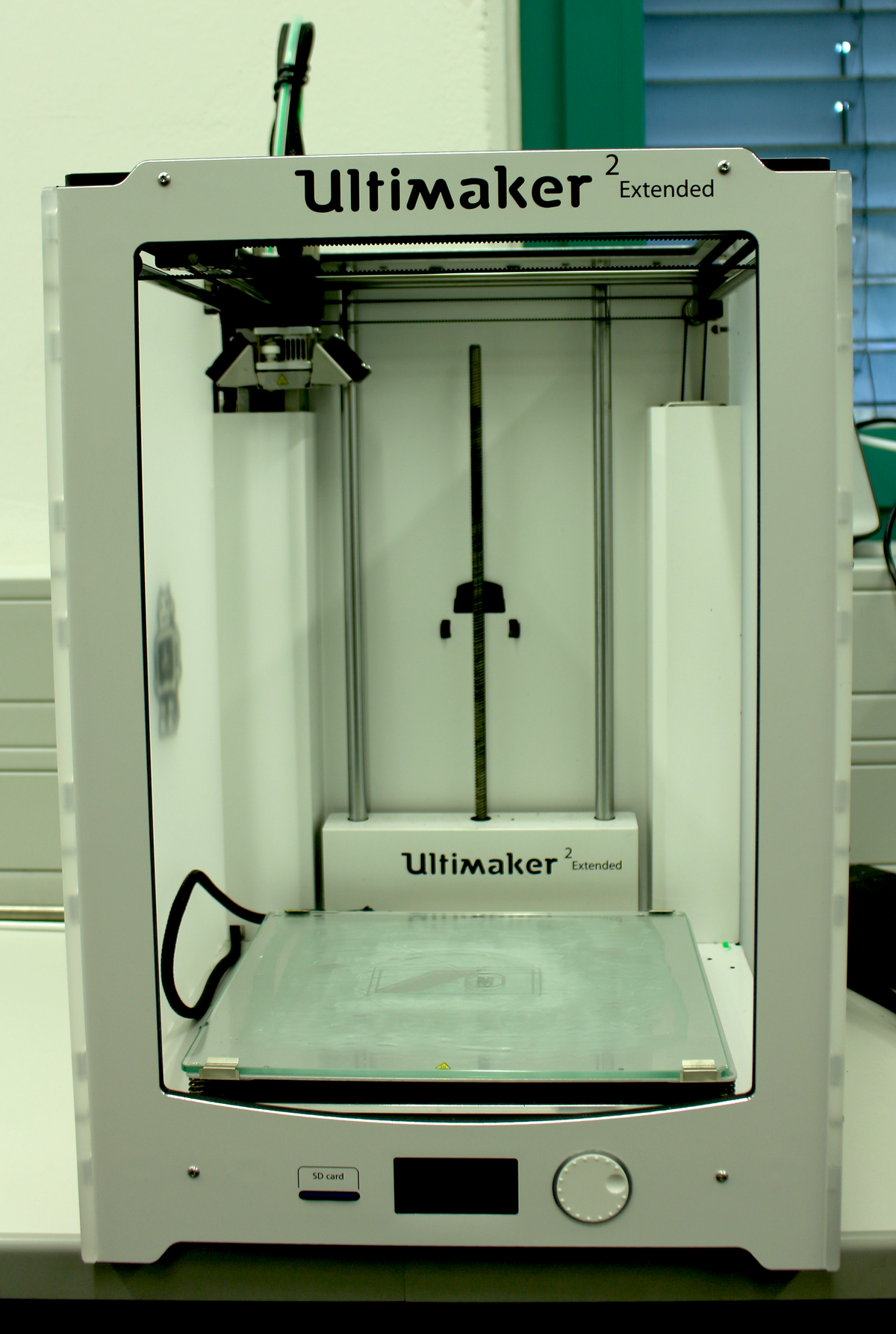
The 3D printer allows us to print molecule models for teaching, or organic structures as templates for the preparation of inorganic structured materials (with Prof. Gesing).
Technical data:
| Printing dimensions | 342 x 505 x 688 mm |
| Layer resolution 0.25 mm nozzle | 150 - 60 micron |
| Build speed | < 24 mm³/s |
| Nozzle temperature | 180 ˚C to 280 ˚C |
| Print head travel speed | 30 to 300 mm/s |
| Materials | Nylon, PLA, ABS, CPE, CPE+, PVA, PC, TPU 95A, PP |
Contact person:Philipp Gliese
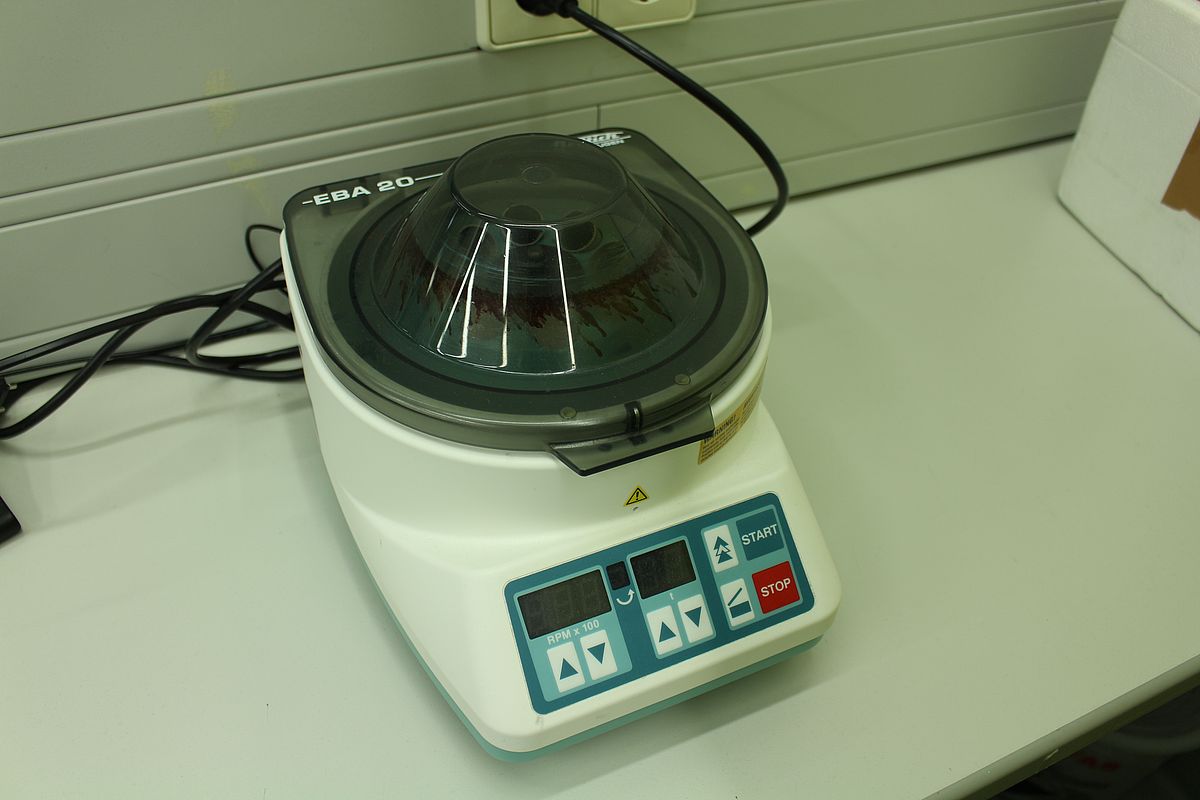
Contact person:Jasmin Richter
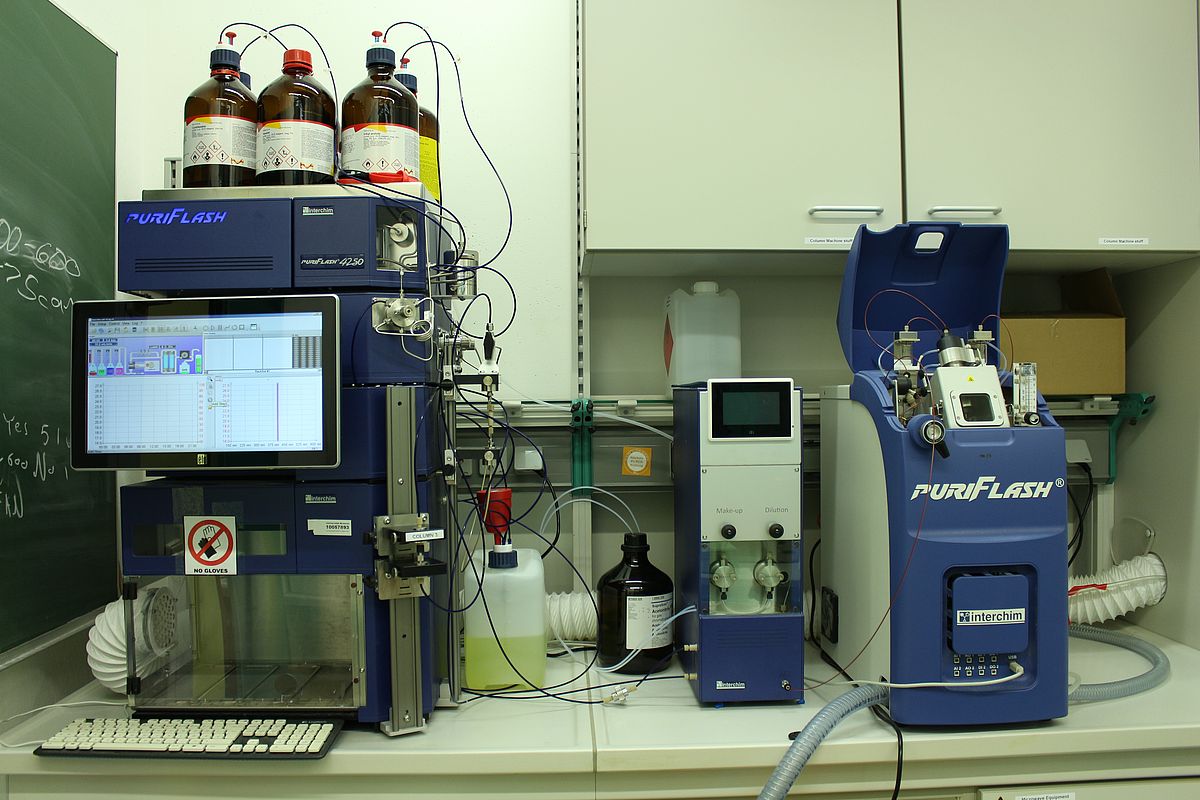
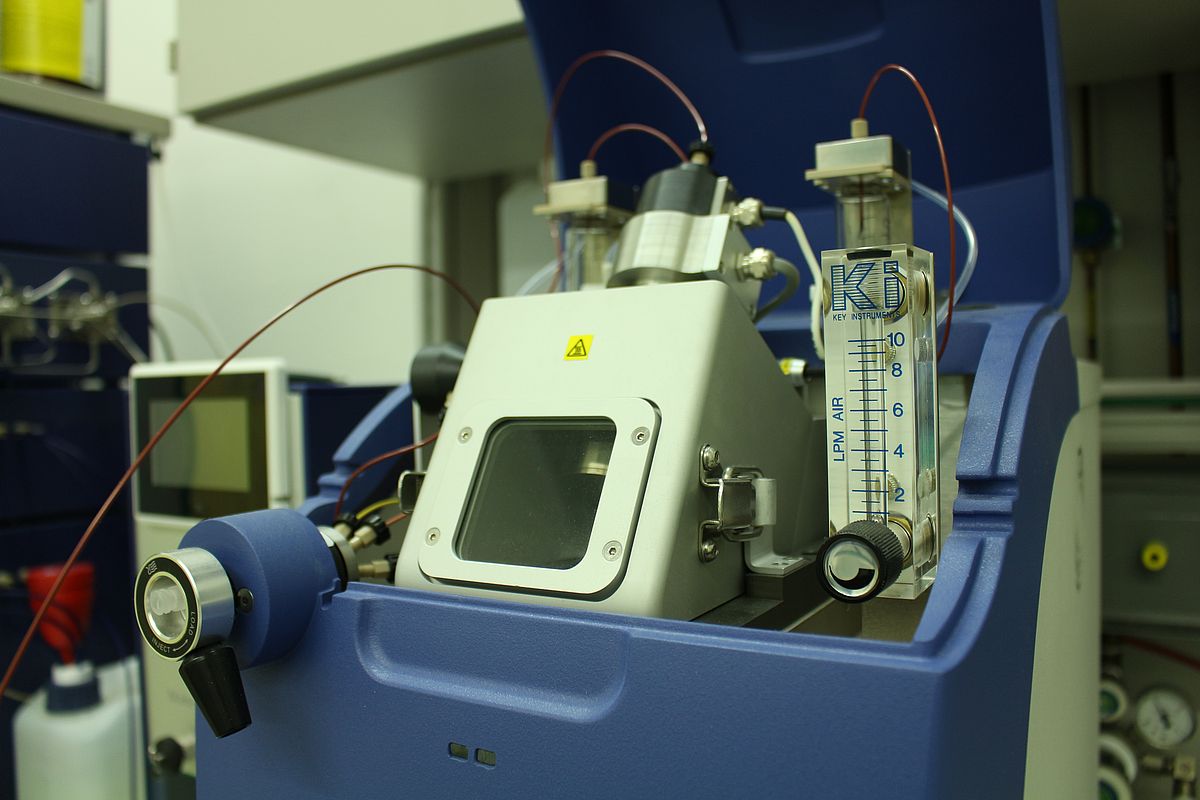
Many compounds require purification by column chromatography. In order to facilitate and automate the process, we have a column machine. It is equipped with a UV-vis detector and MS detector so that the content of the fractions can be determined automatically. Moreover, it can be run at high flows and high pressures, which increases separation and separation speeds.
Technical data:
| Flow rate | up to 250 mL/min |
| Pressure | 250 bar |
| Gradient and isocratic separation available | |
| Two column holders (flash and prep LC columns) |
UV-Detection:
| Diode array detector (DAD) technology |
| Dual wavelength system (range: 200-600 nm) |
Mass spectrometric detection:
| Flow rate range | 10 µL/min to 500 µL/min |
| Mass range | m/z 10 to m/z 1200 |
| Switchable ion sources | Atmospheric Pressure Chemical Ionisation (APCI) |
| Electrospray Ionisation (ESI) |
Contact person:Waldemar Kipke or Jan Makow
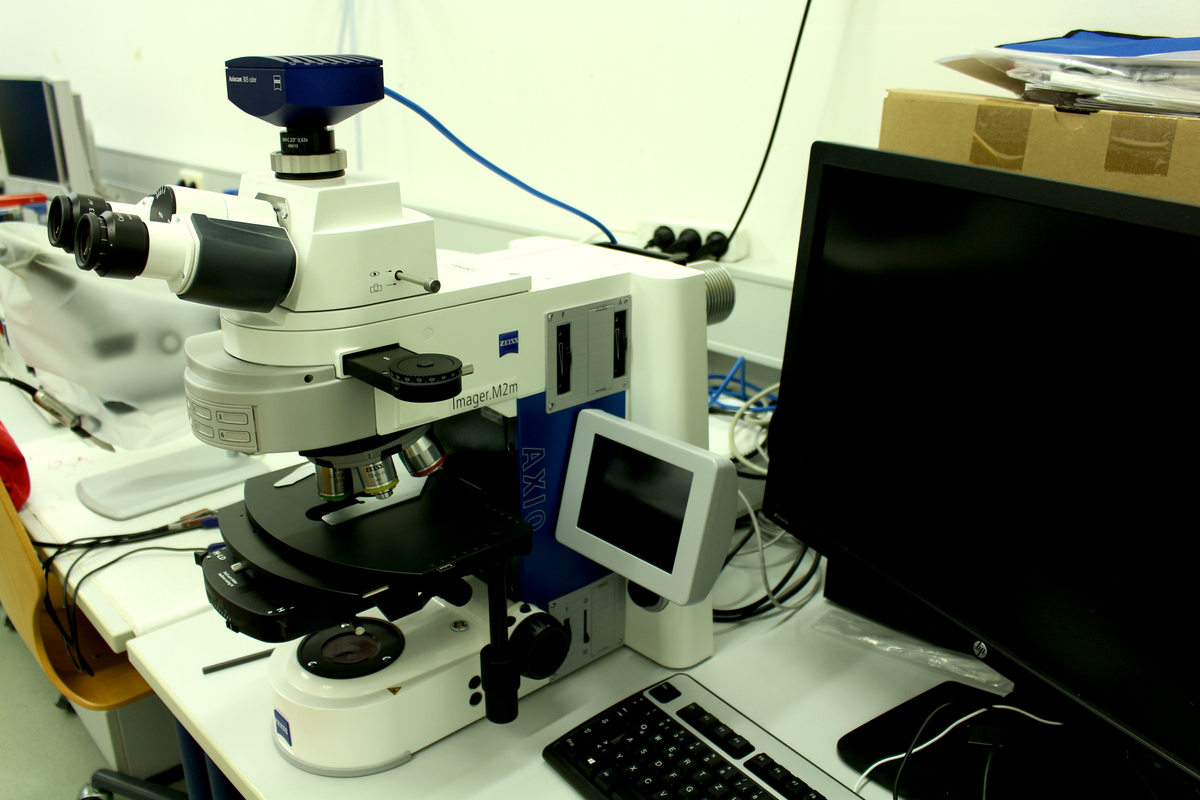
Coming soon; Funding has been made available.
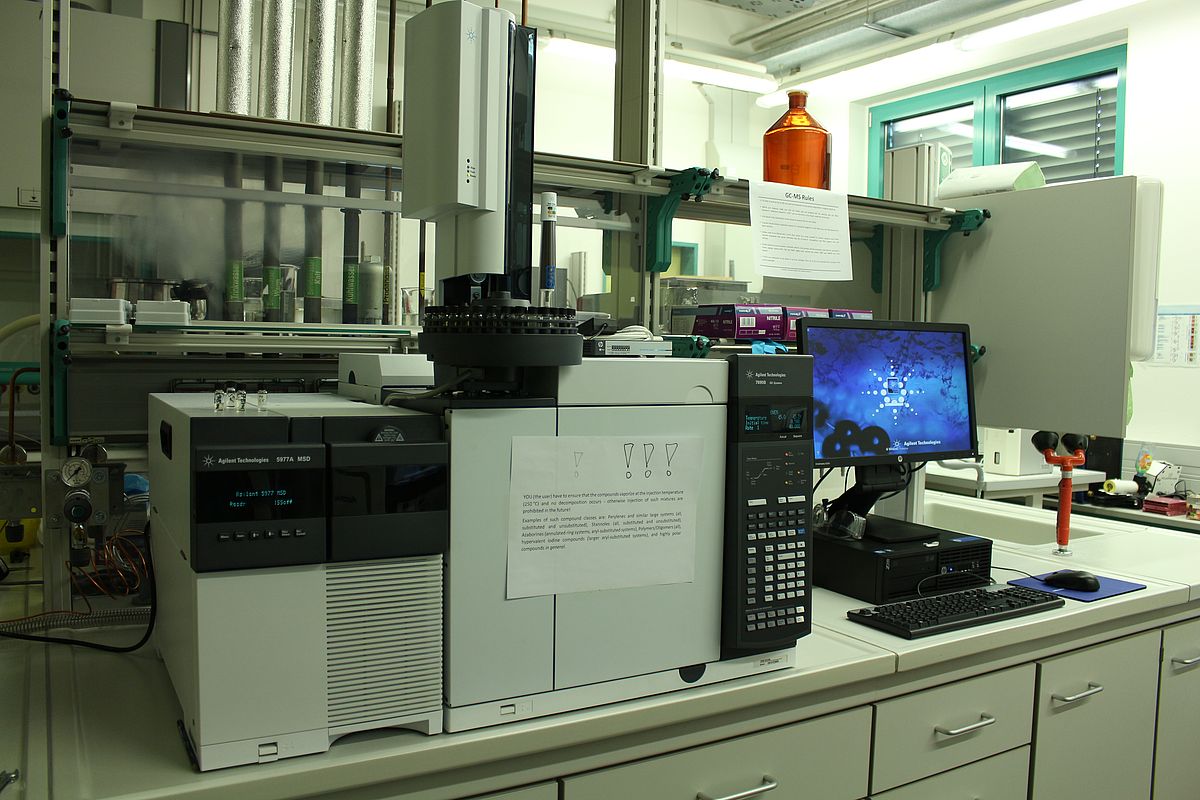
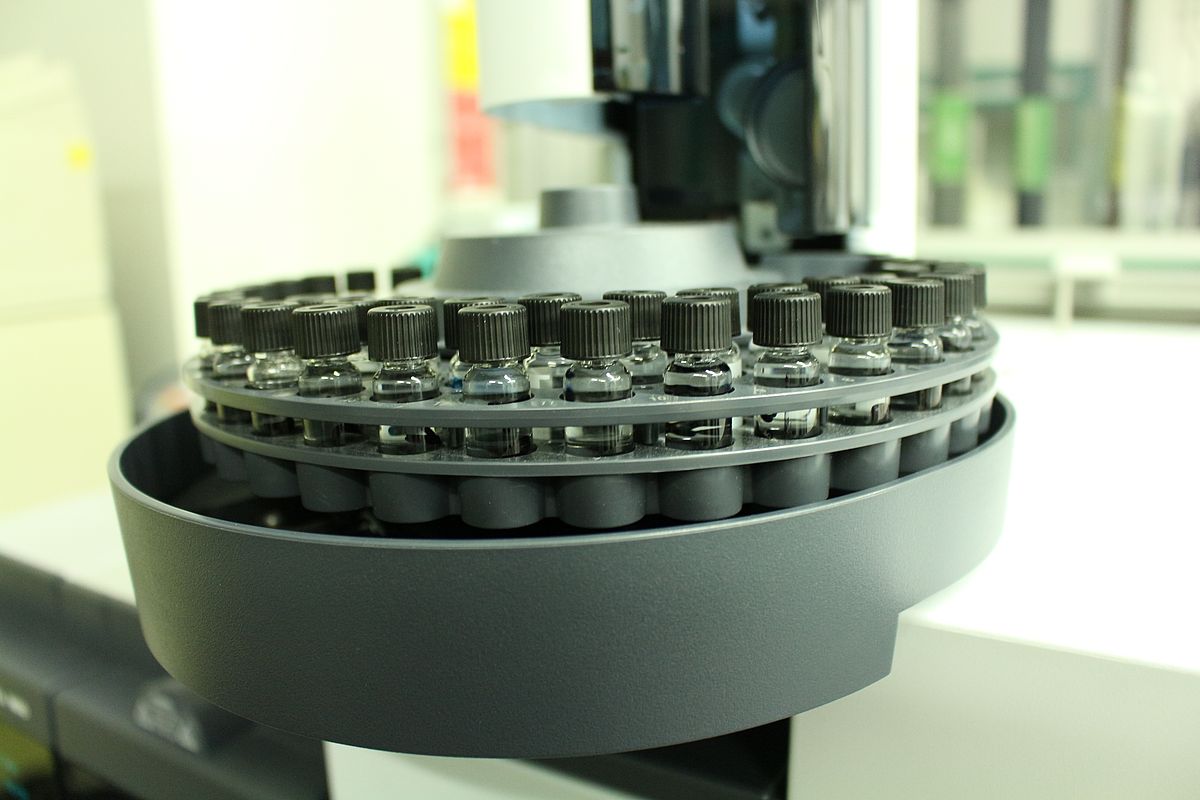
To analyse if a reaction was successful, it is very useful to run a fast reaction control by GC-MS. For this, the sample is subjected to a mini work-up and injected into the GC-MS.
For quantification, an internal standard can be added, such as mesitylene or naphthalene.
Technical data:
| EI and CI (negative and positive, methane) |
| 200 °C gold quadrupole |
| Up to 1050 Da |
Contact person:Waldemar Kipke
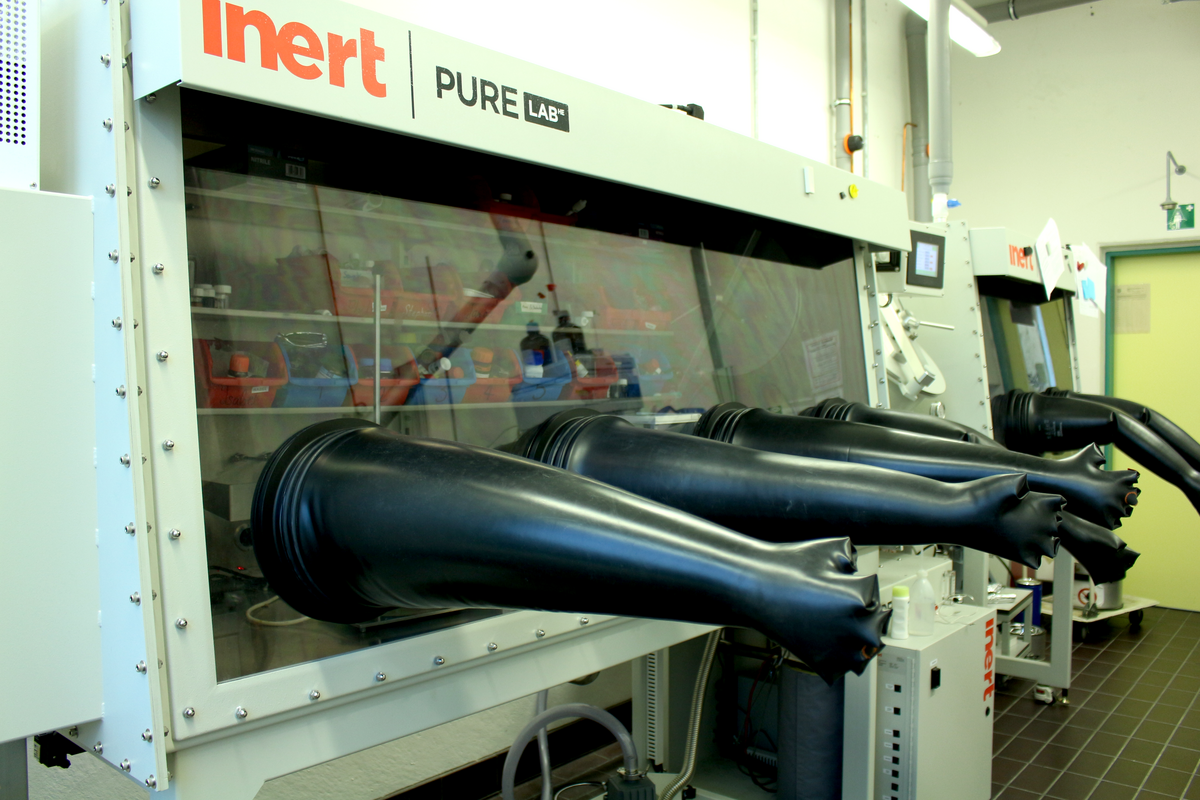
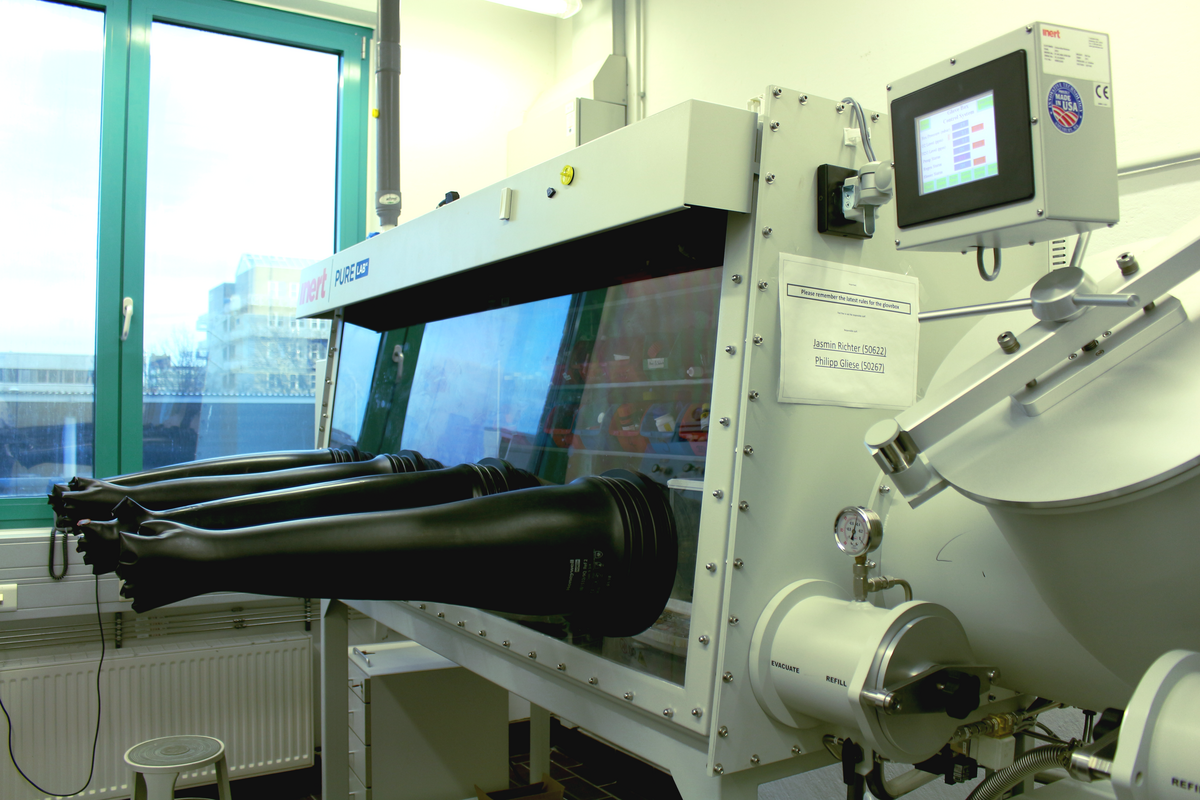
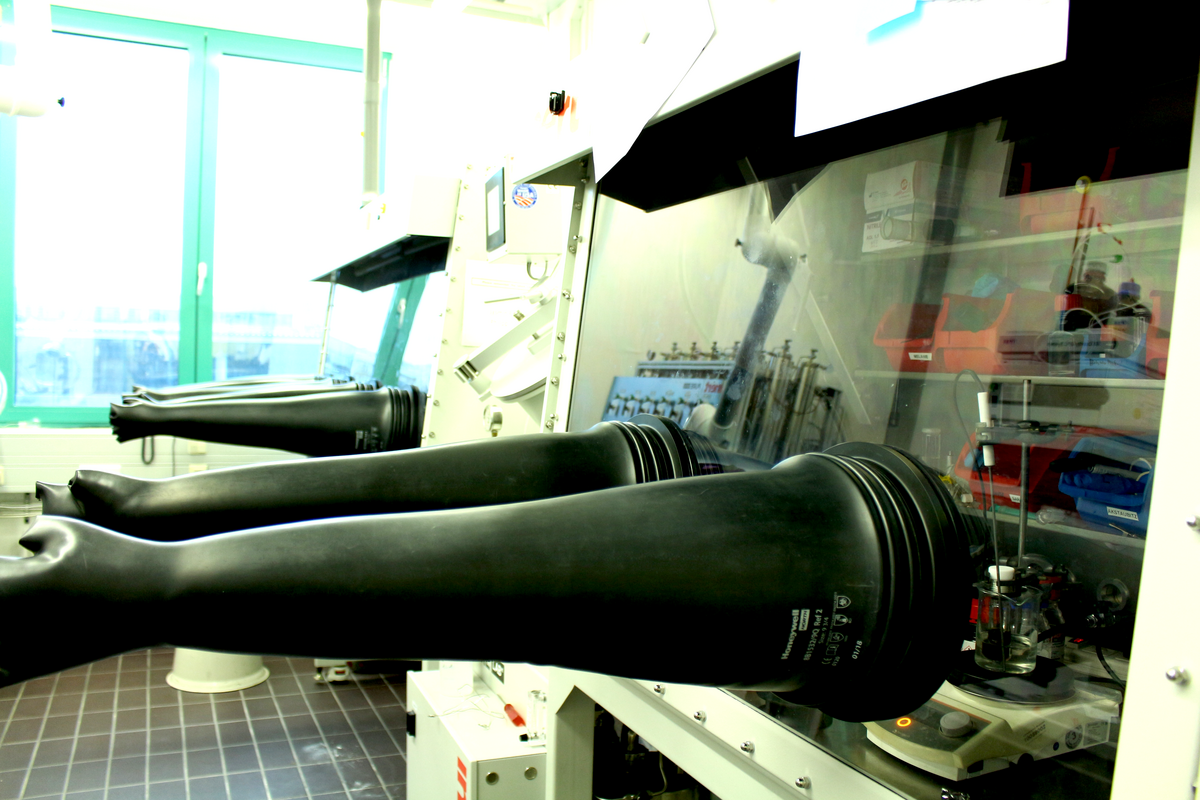
As a lot of the work we do needs to be performed under inert conditions, we have a large double glove box (Inert Technologies).
Technical data:
| 40 L freezer (minimum temperature: -40 °C) |
| Automatic purge valve |
| Automatic antechamber control |
| Vacuum connection for solvent removal inside the glove box |
| Solvent connections to the SPS: THF, toluene, pentane, DCM |
Contact person: Yannik Appiarius or Melanie Walther
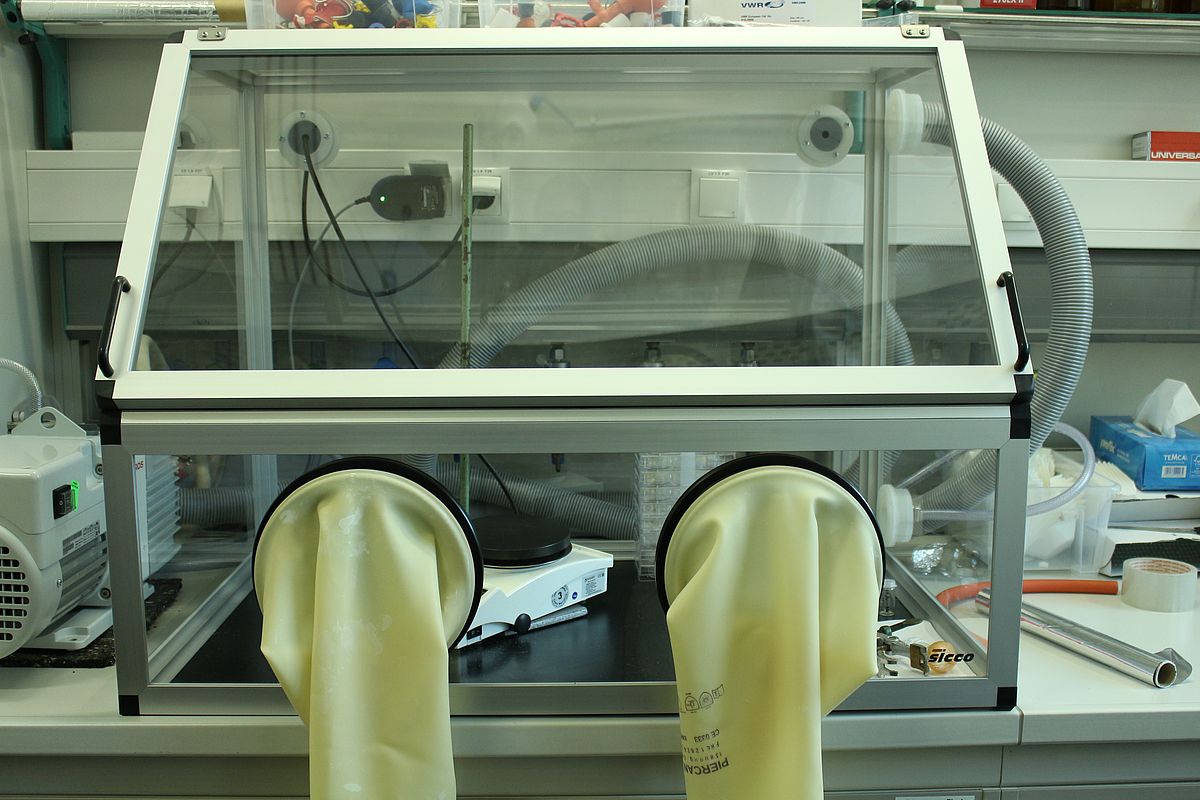
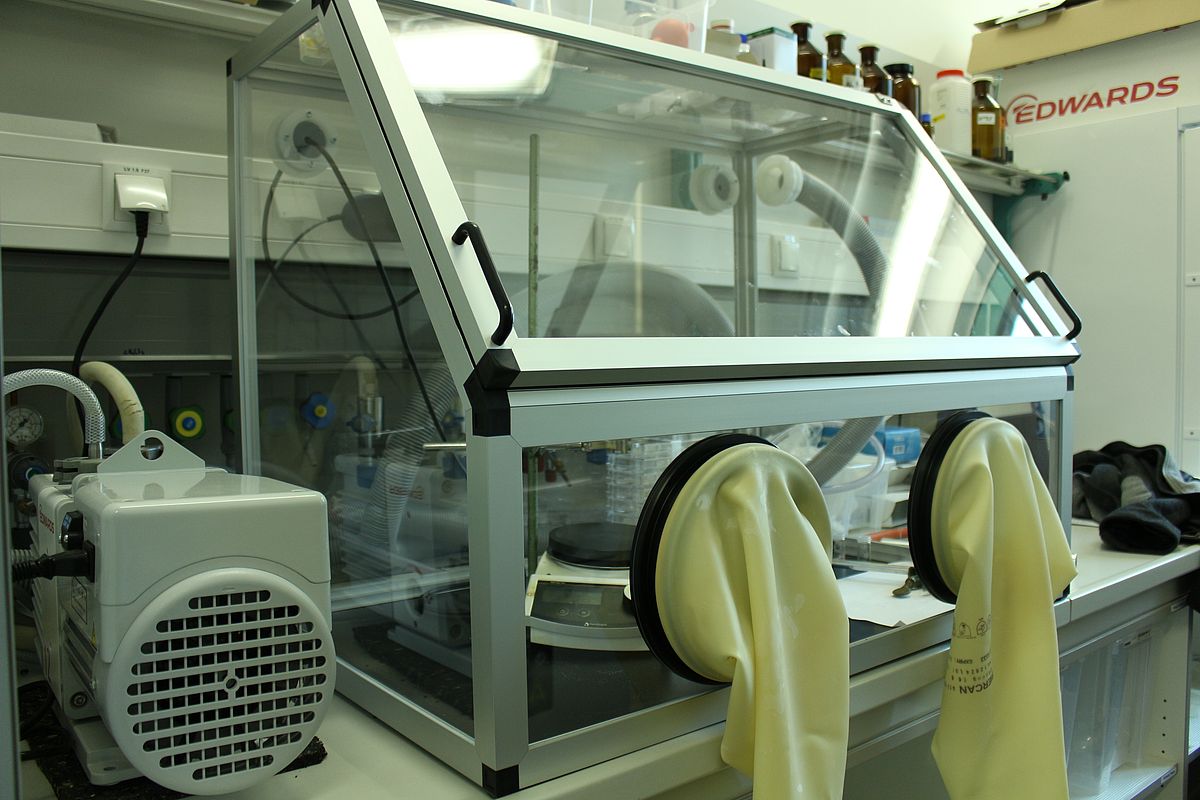
Polymerizations might need to be performed oxygen-free but with the use of water. In order to not harm the big glove box, we have a small glove box just for those type of reactions.
Contact person:Dr. Clement Appiah
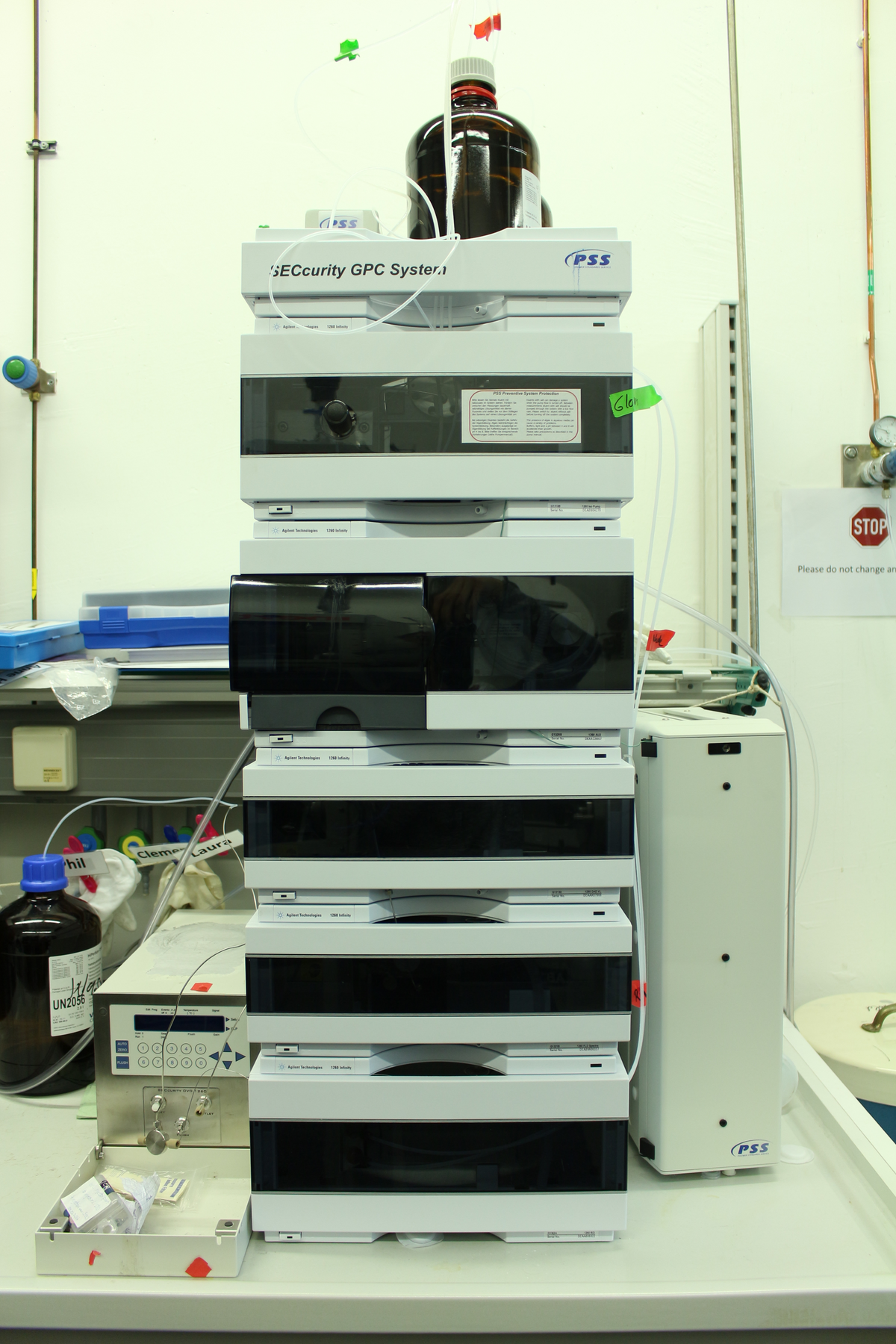
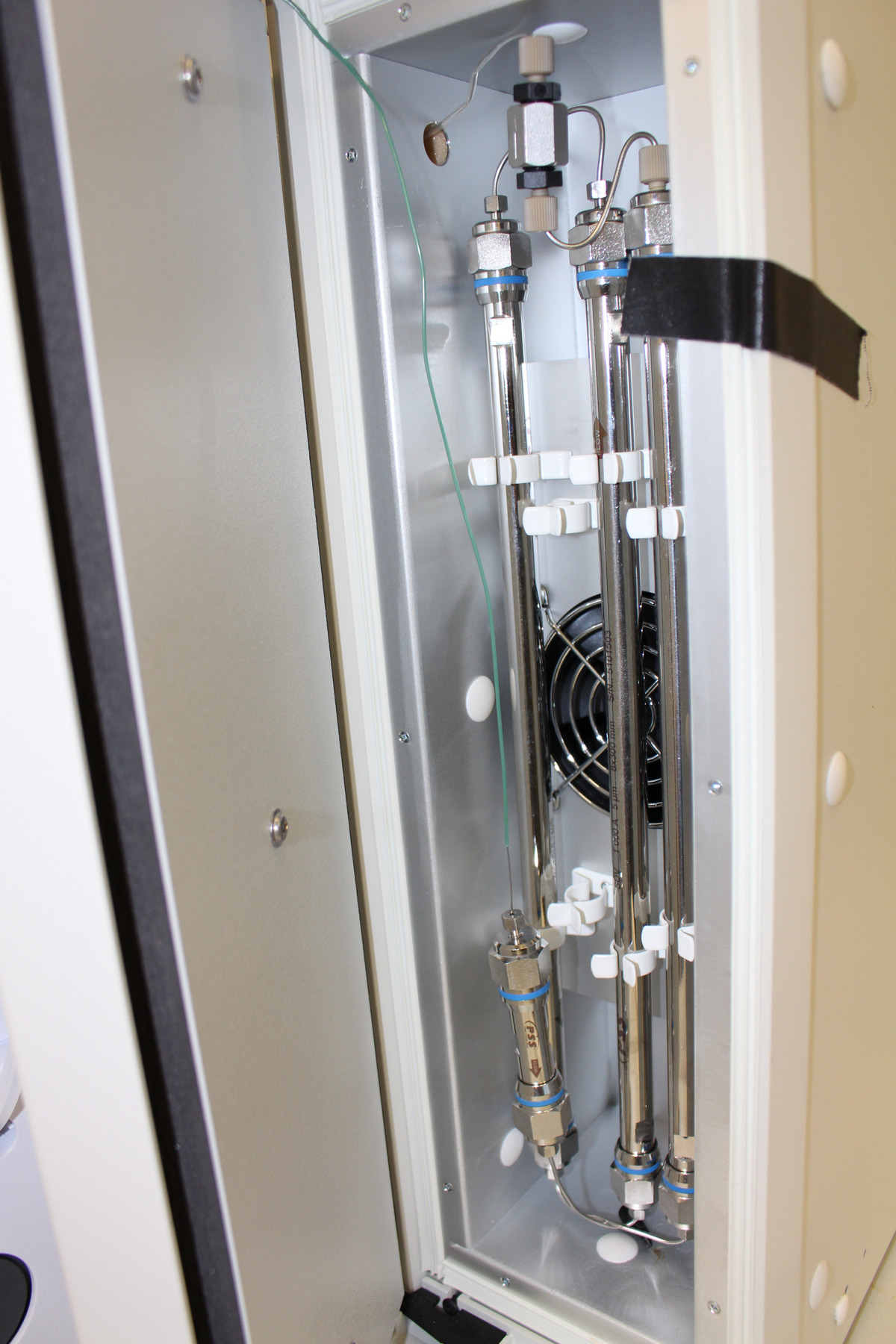
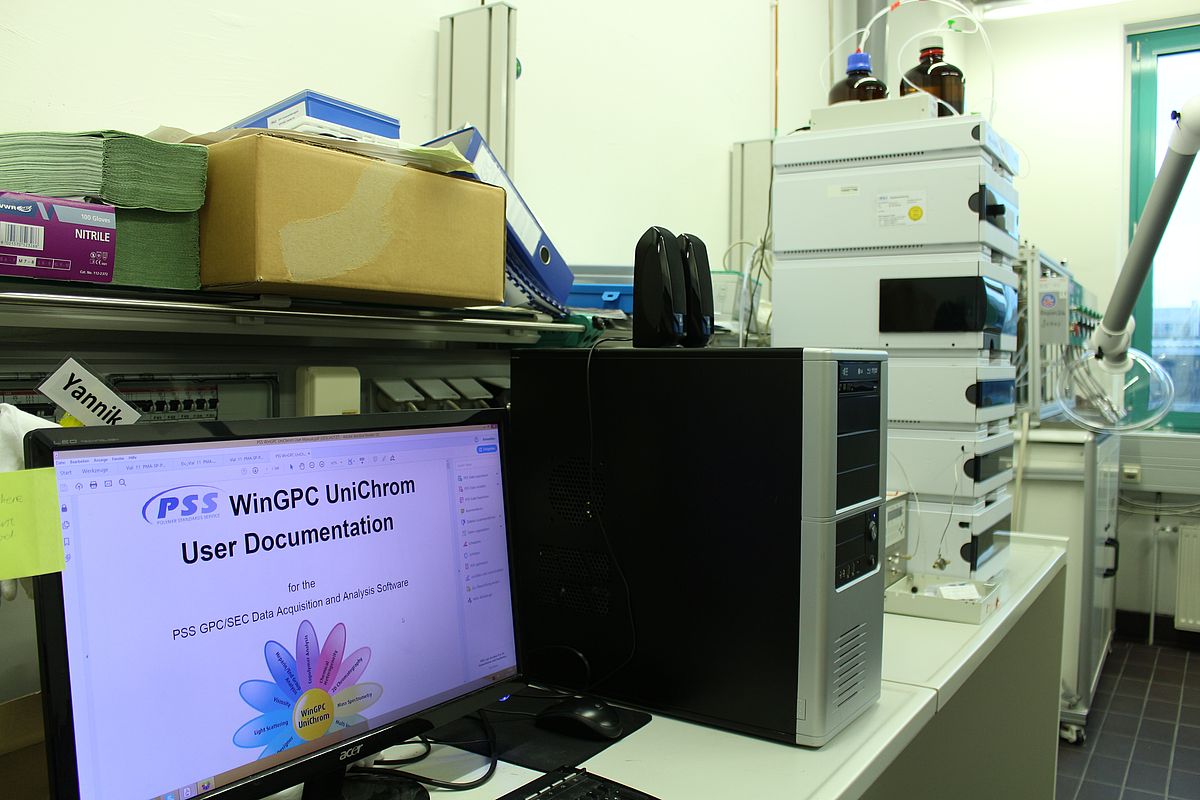
In order to analyse the size of soluble polymers, we have a gel permeation chromatography system from PSS that allows us to perform triple detection.
Technical data:
| Pump with pressures up to 600 bar |
| ALS-Autosampler |
| DAD (diode array): UV/VIS, 190 – 950 nm |
| FLD (fluorescence detector, light scattering): 90 °, 300 – 600 nm |
| RID (refractive index detector) |
| DVD (differential viscosity detector) |
| 3 columns for polymer sizes of 100 to 3 000 000 Da |
Contact person:Ruchira Arpin Colaco or Dr. Clement Appiah
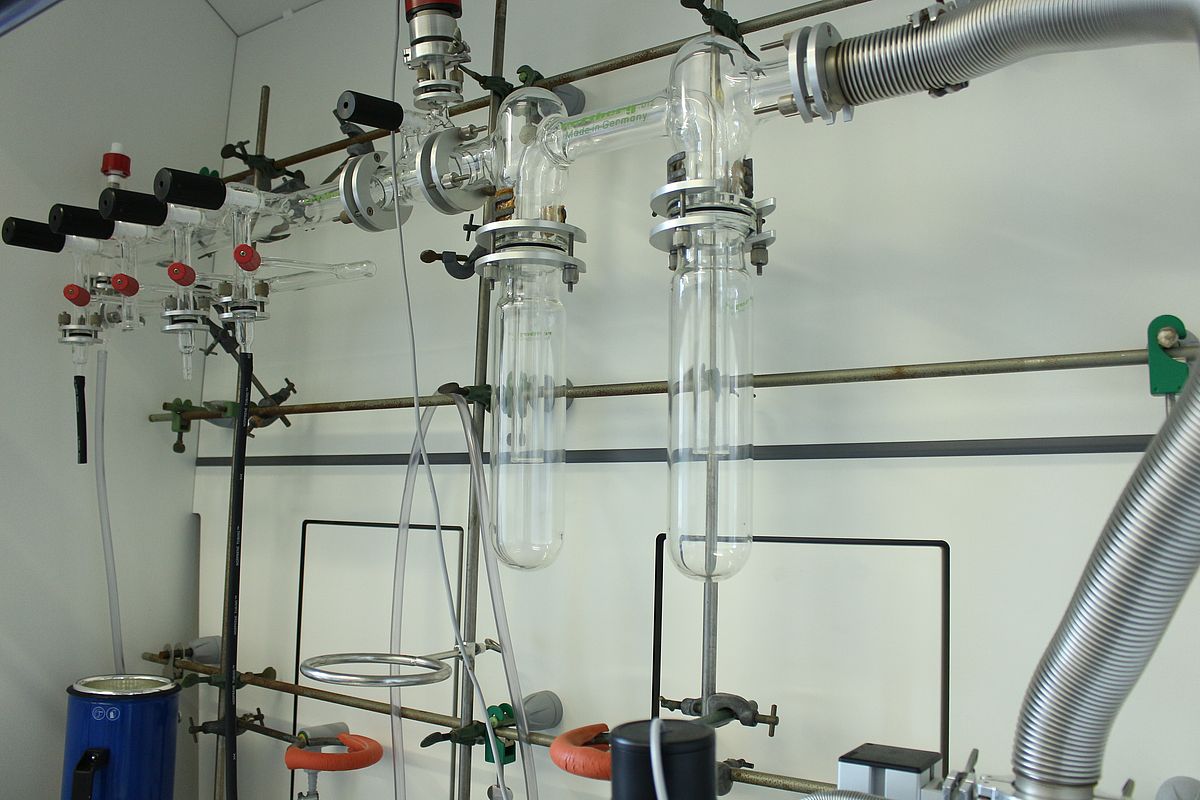
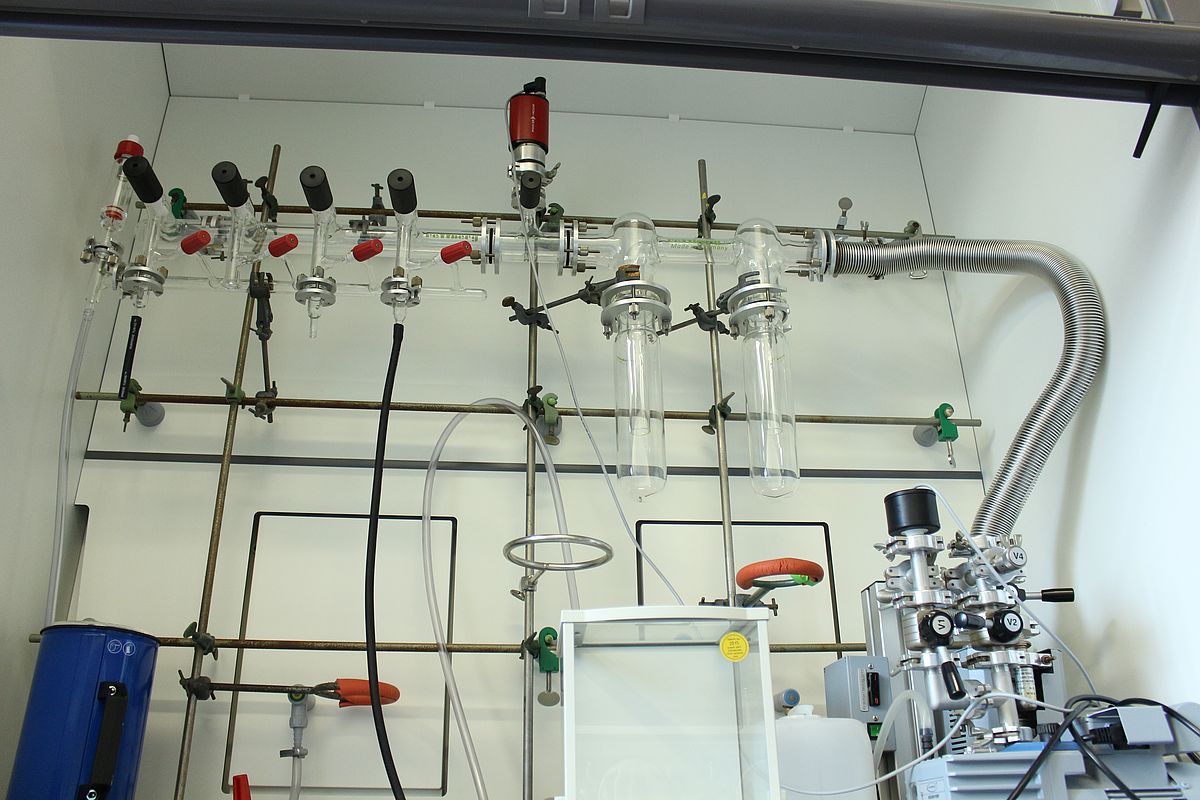
Compounds can be dried, sublimed or distilled at a vacuum of lower than 10-6 mbar. This vacuum is achieved by using an oil pump and a turbo molecular pump in symbiosis. The apparatus is further equipped with a Schlenk line with up to four recipients so drying, sublimation or distillation can be performed under nitrogen or argon atmosphere.
Technical data:
| Two barometers (recipient and oil pump) |
| Two cooling traps (from Rettberg) and PTFE srew valves |
Contact person:Jonas Hoffmann

The IR spectrometer is used to analyse the functional groups in insoluble polymers and in the undergraduate practical laboratory.
Technical data:
| Measurement range | 7800 bis 525 cm-1 |
| Spectral resolution | 64 to0.4 cm-1 |
| Signal / noise | 35.000:1 (Peak-to-Peak, 1 min) |
Contact person:Souvik Gosh
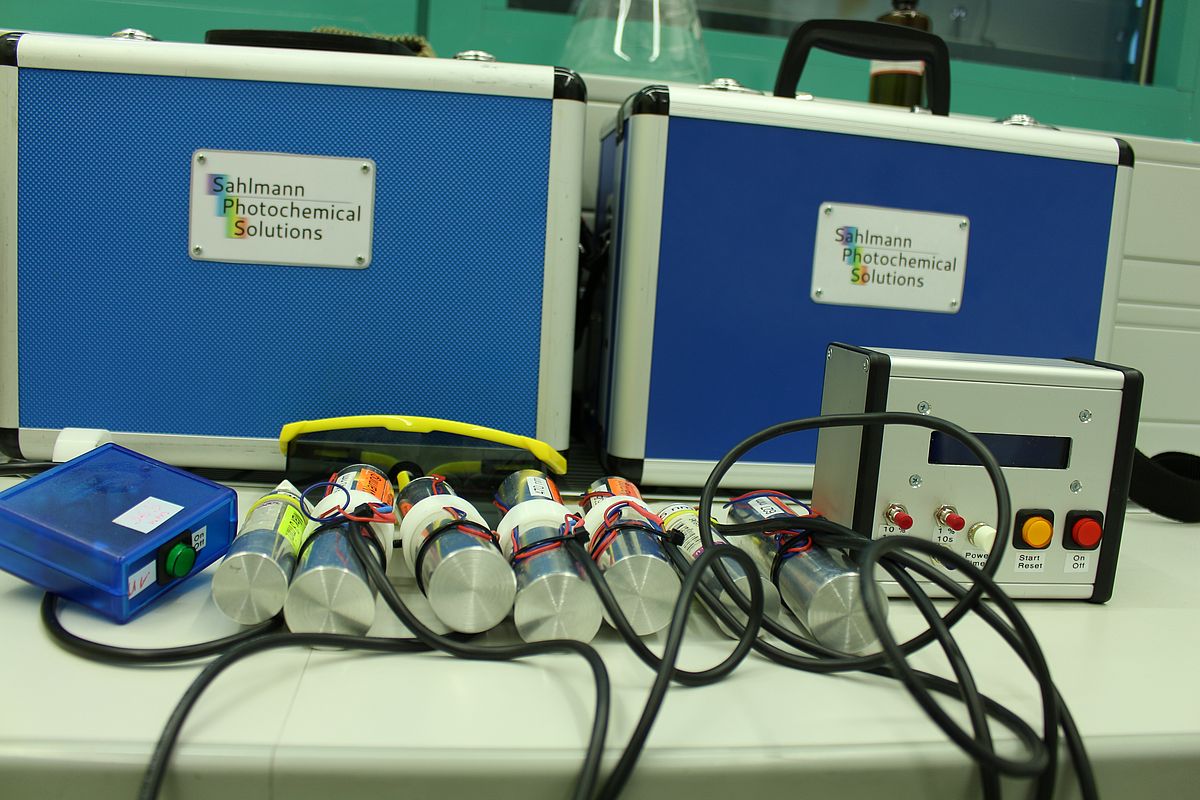
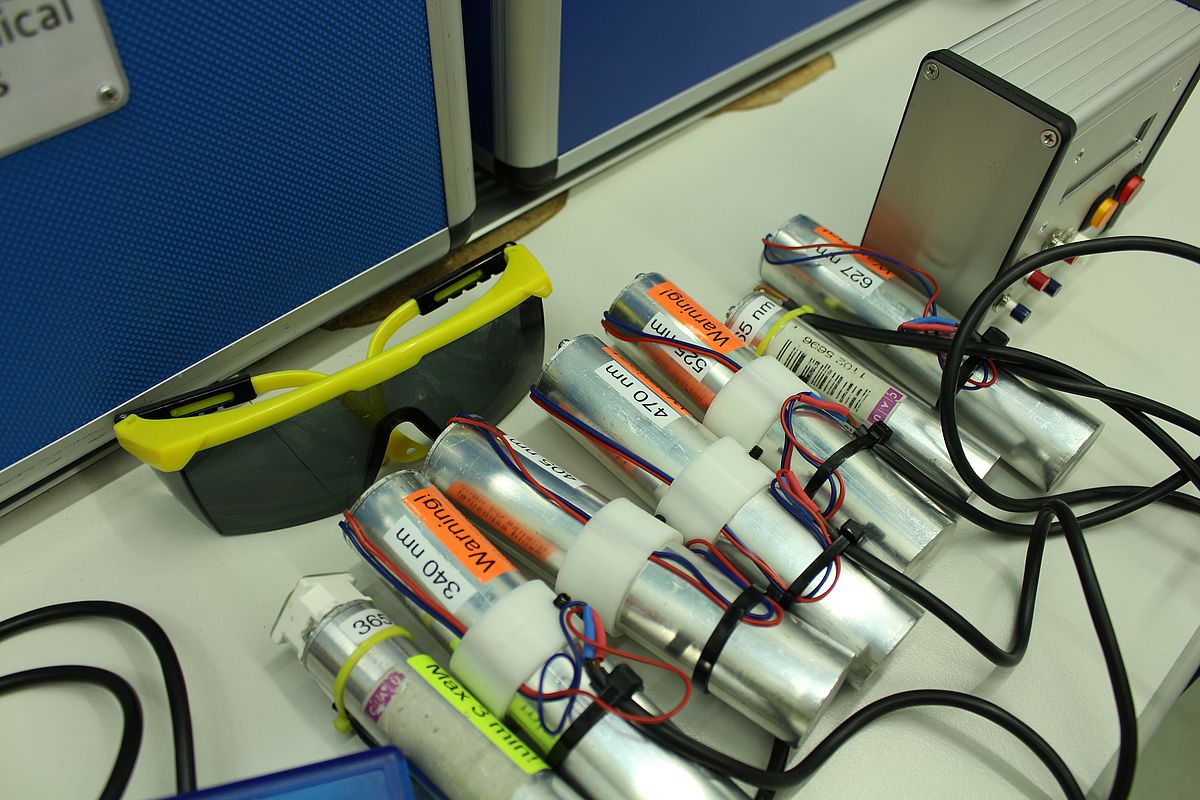
Several different LED lamps are available in our research group for irradiation experiments.
Contact person:Jasmin Richter
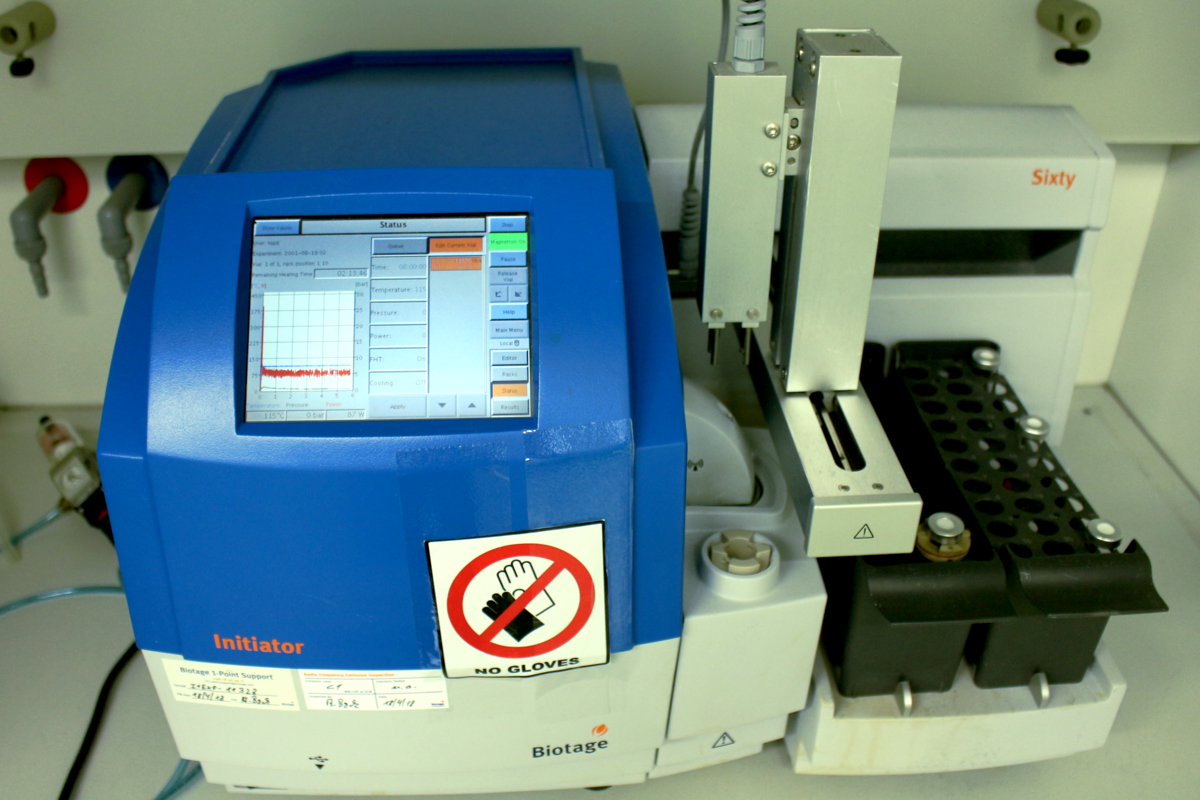
The microwave offers the possibility of controlled and fast heating processes. Because the vials can withstand a certain pressure, solvents can often be heated to higher temperatures than their boiling temperature at normal pressures.
Technical data:
| Autosampler (30 x 10 mL and 12 x 20 mL) |
| Pressure up to 30 bar possible |
Contact person:Waldemar Kipke
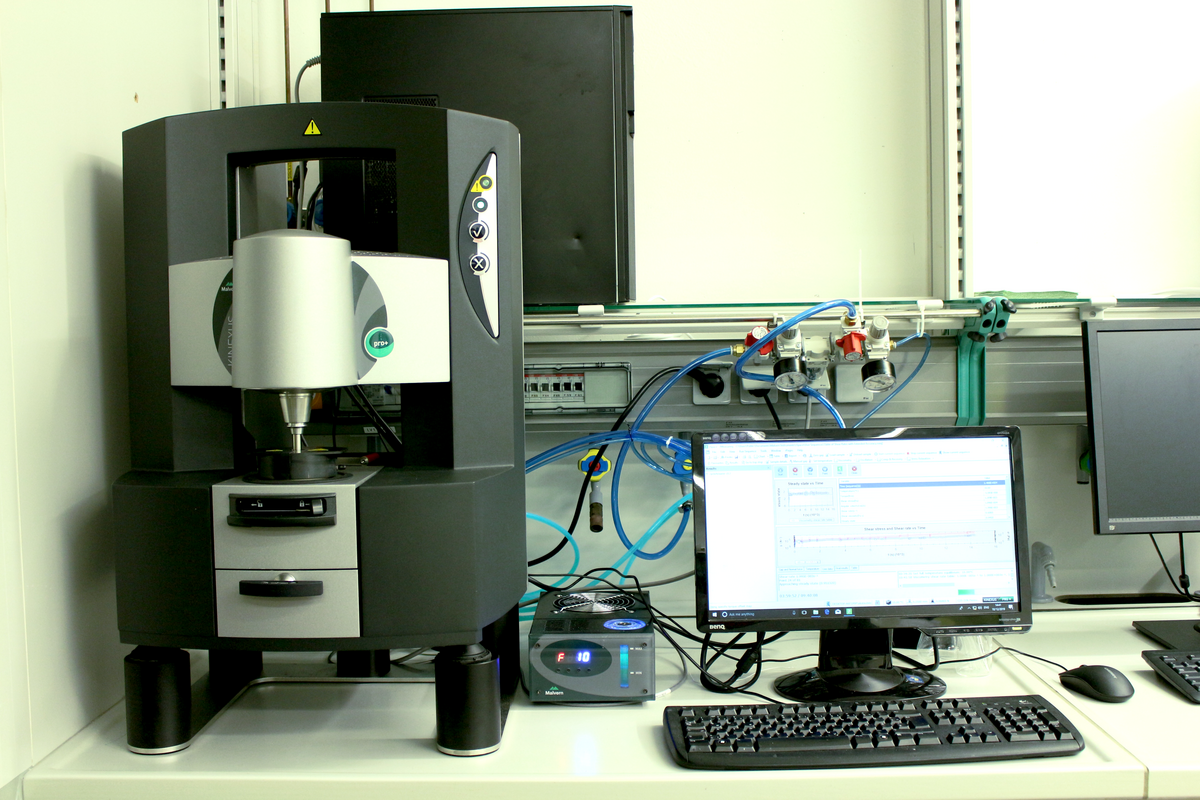
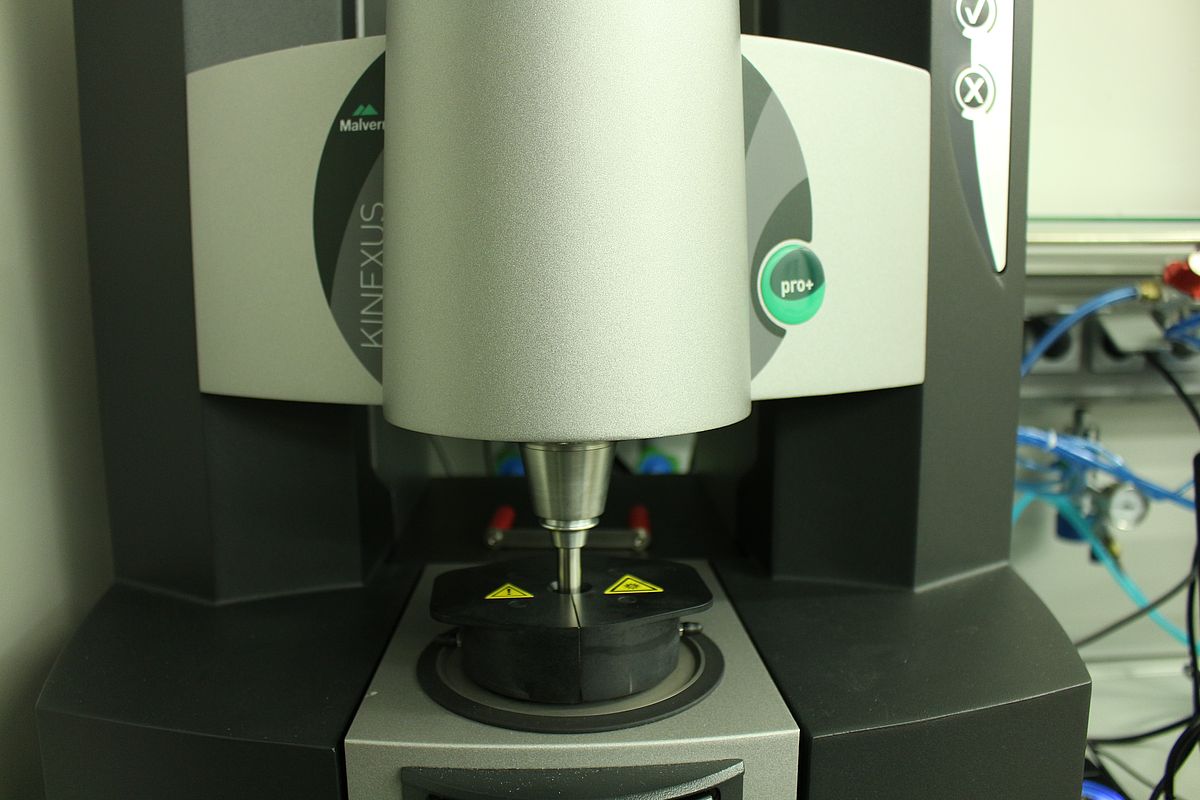
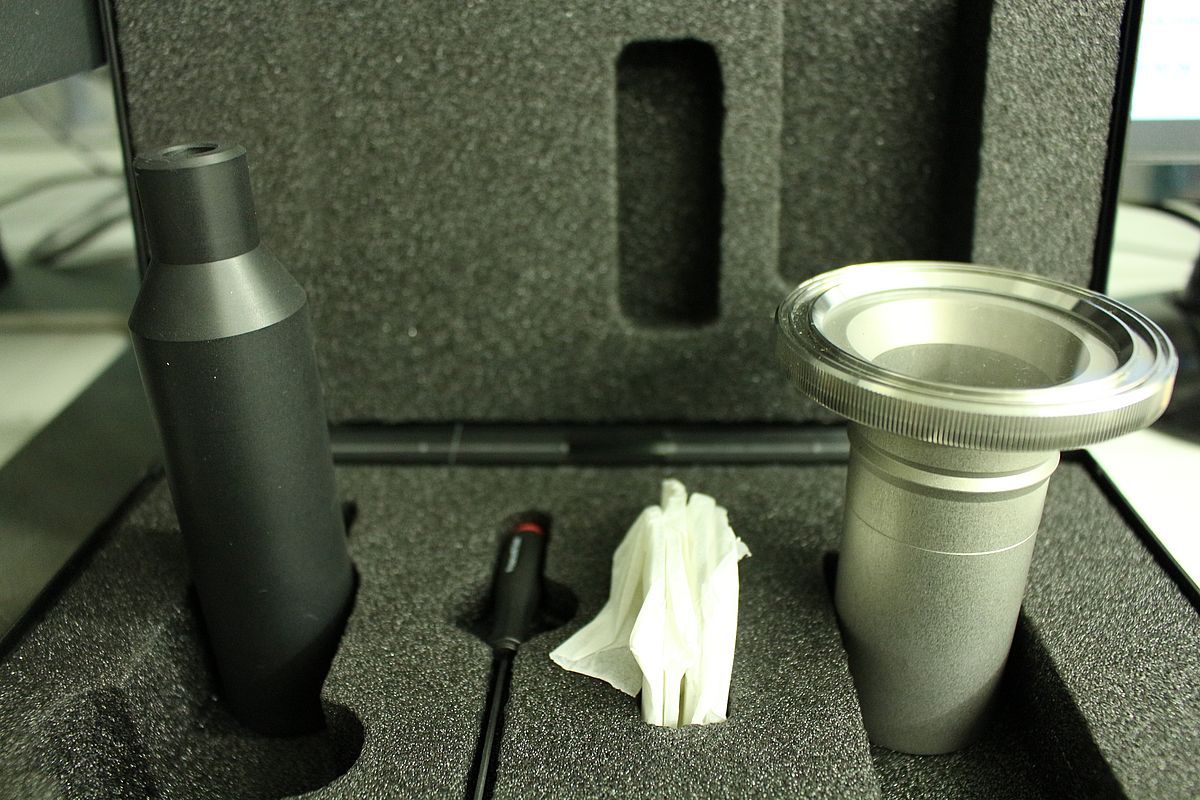
In rheological investigations, it is possible to study the flow and deformation of materials, described by the interaction between force, deformation and time.
With our system you are capable of measuring viscosity and elasticity of Newtonian and non-Newtonian materials under a wide range of conditions. Some extra important properties that can be measured using our rheometer include viscoelasticity, yield stress, thixotropy, dynamic viscosity, creep compliance and stress relaxation behavior etc.
Technical Data:
Temperature range | -40 °C to 200 °C |
Stress range | 2.4 E-08 Pa to 535 Pa |
Shear rate | 1.1 E-08 1/s to 5262 1/s |
Oscillation frequency | 1.0 E-07 Hz to 150 Hz |
Speed | 1.0 E-09 rad/s to 500 rad/s |
Torque | 1.0 E-09 Nm to 0.225 Nm |
Direct in-situ irradiation during measurement with all type of LED lamps are also possible with our system.
Contact person:Dr. Clement Appiah
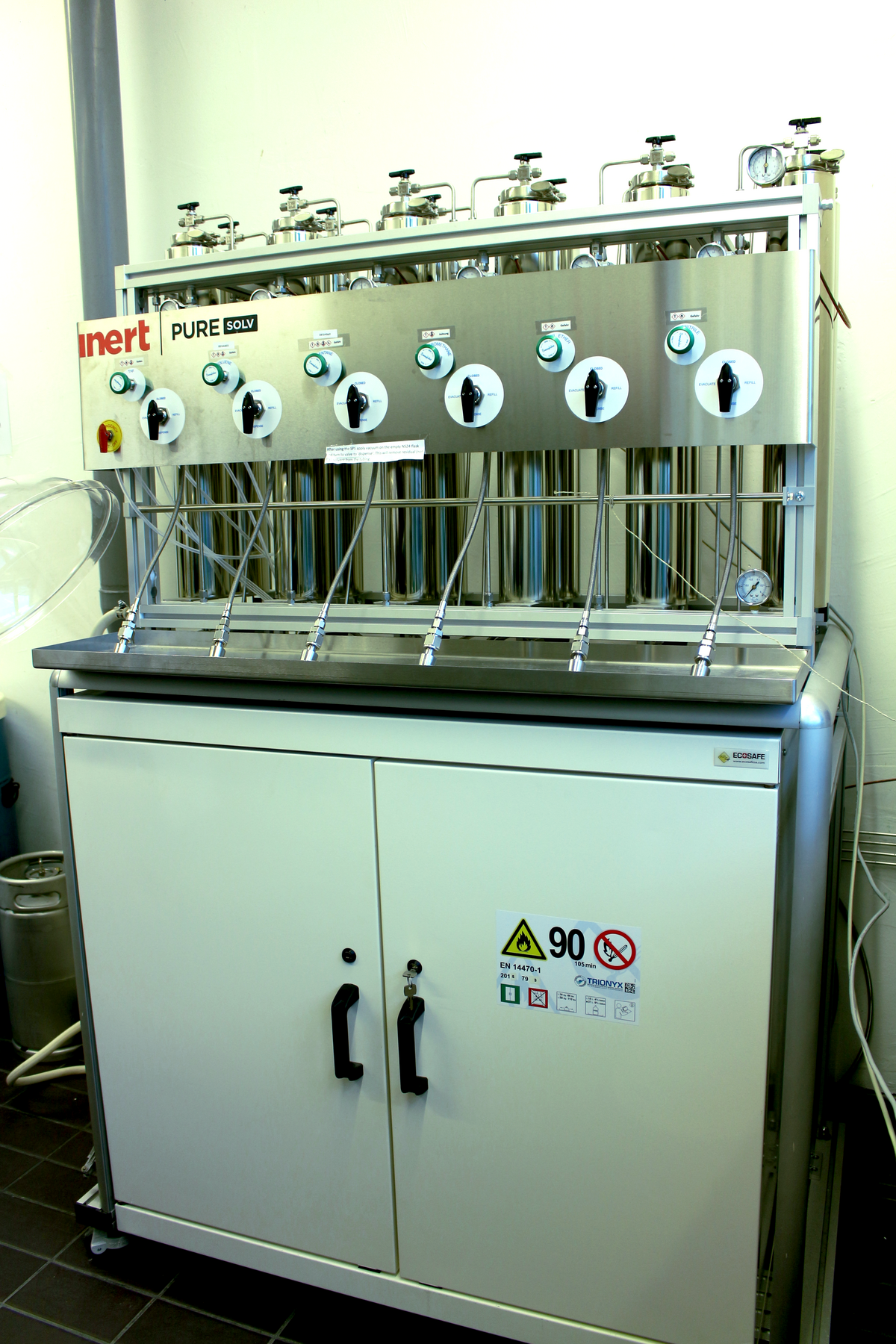
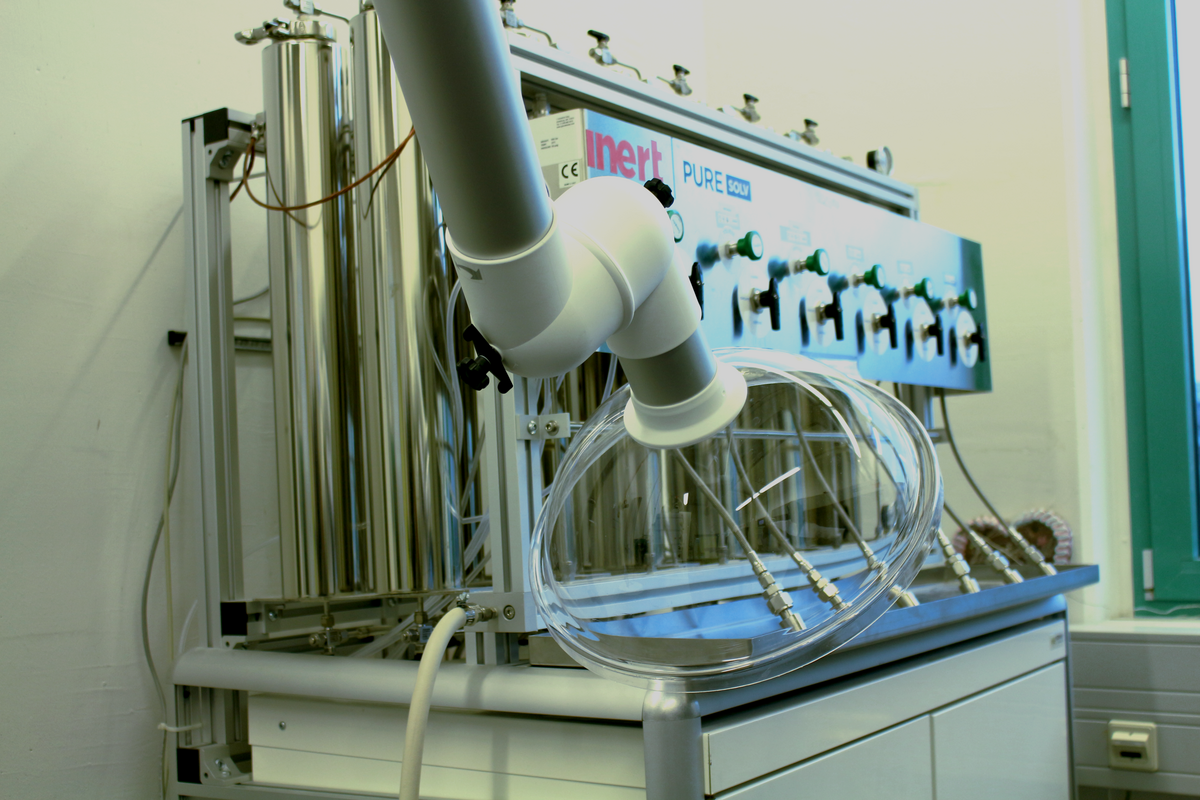
Because destillations pose a major safety problem, most of our solvents are dried with a solvent purification system instead.
Contact person:Jasmin Richter
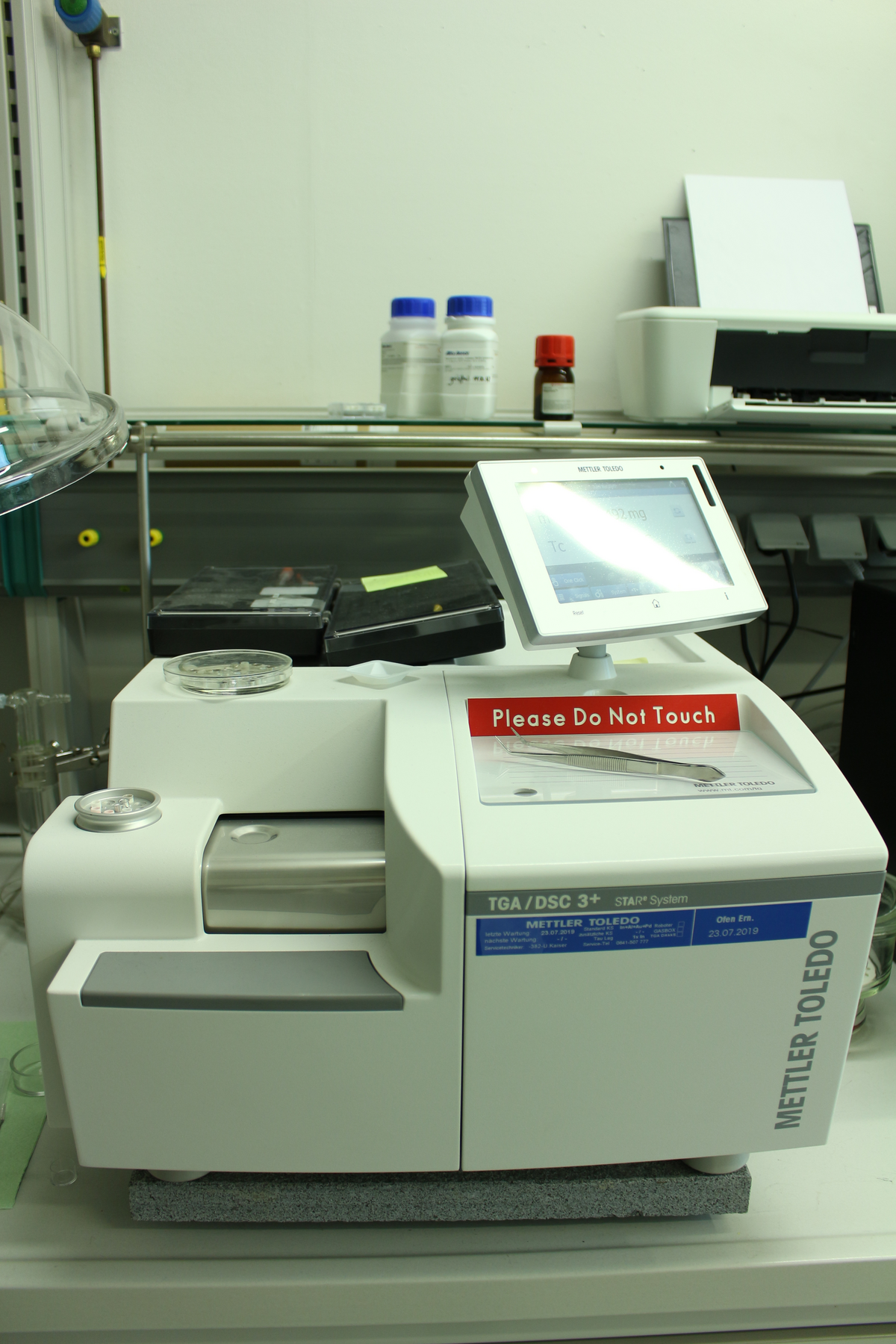
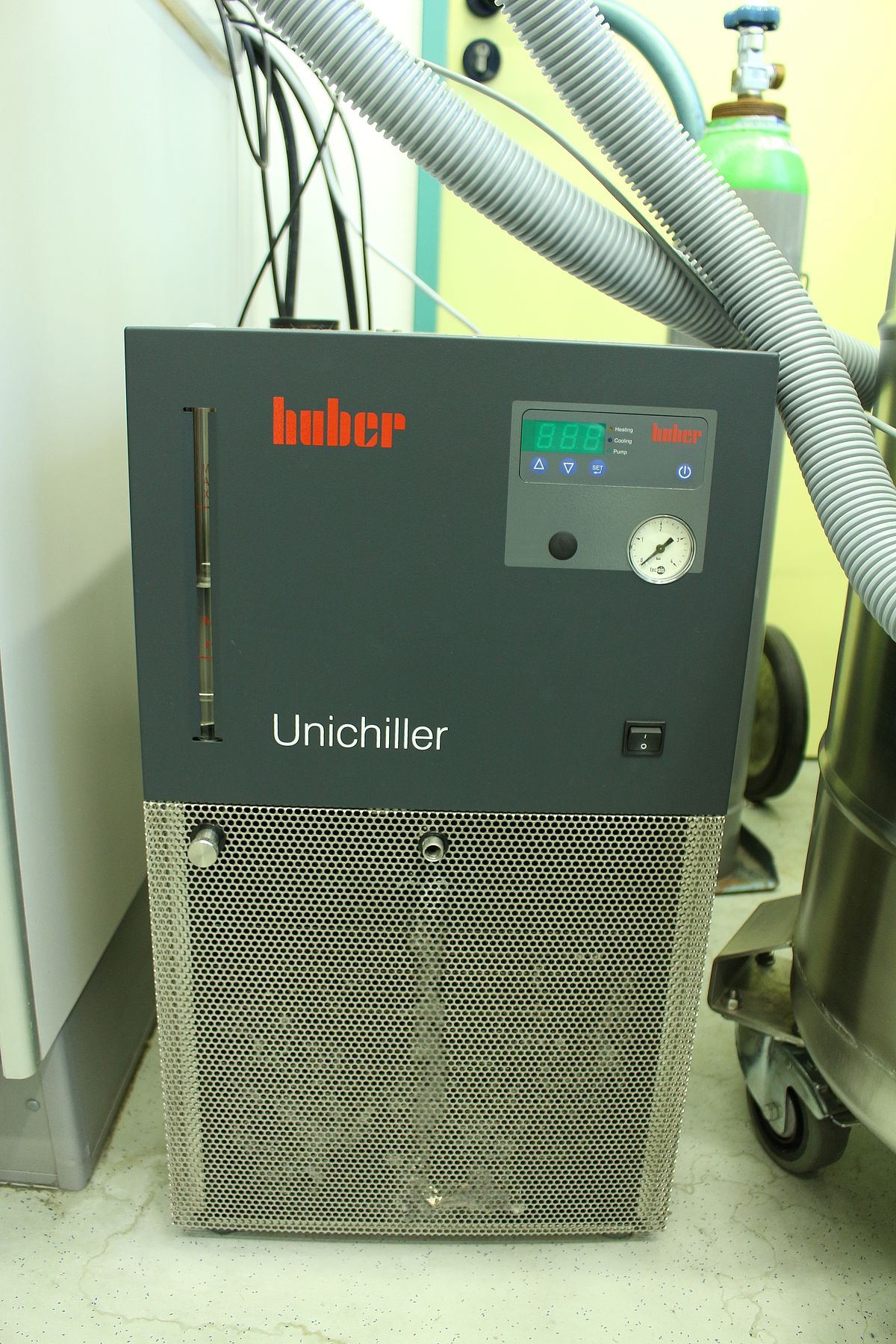
If the thermal decomposition of a material has to be analysed, thermal gravimetric analysis is used. This piece of equipment is a fine balance that can be subjected to temperature programmes under various atmospheres and mass loss or mass gain can be determined.
It also has DSC sensors, which are not as sensitive as the stand-alone DSC equipment, but which allow DSC measurements at higher temperatures (up to 1600 °C).
Technical data:
| Temperature range: room temperature to 1600 °C |
| Measures also DSC |
| Gases: N2 or O2 |
Contact person: Jasmin Richter
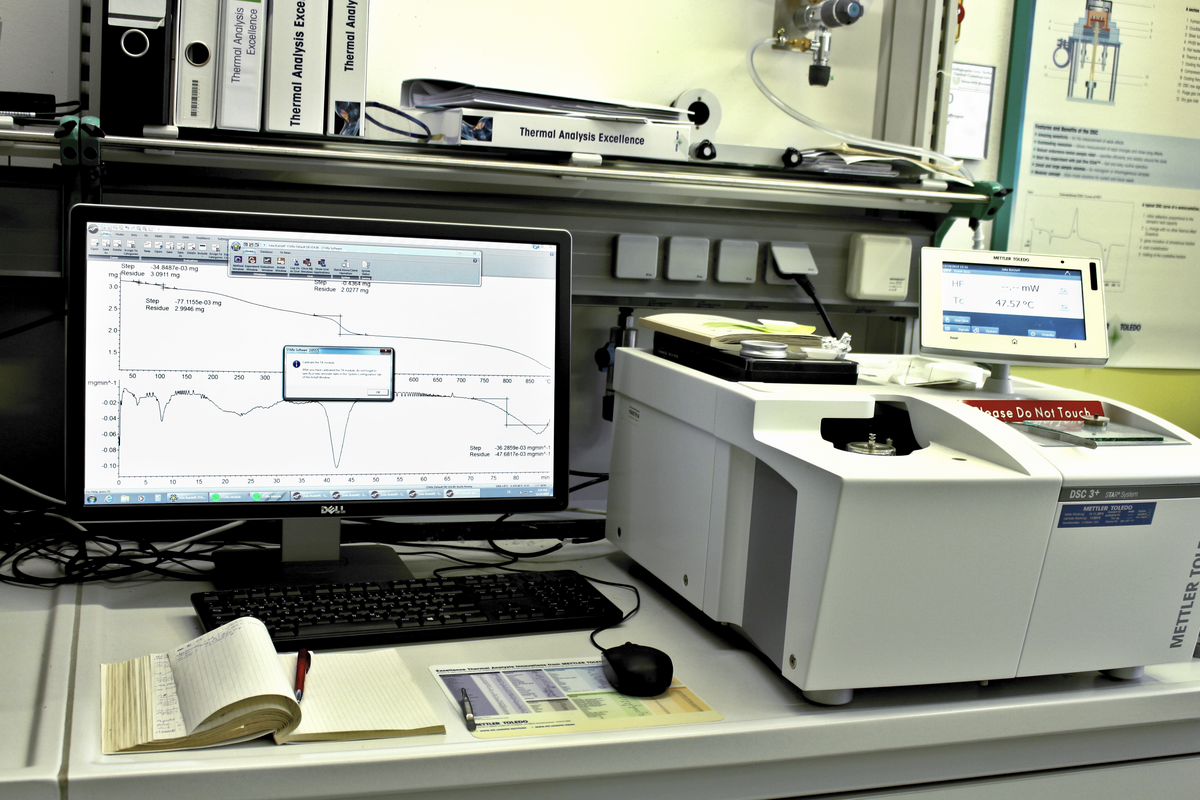
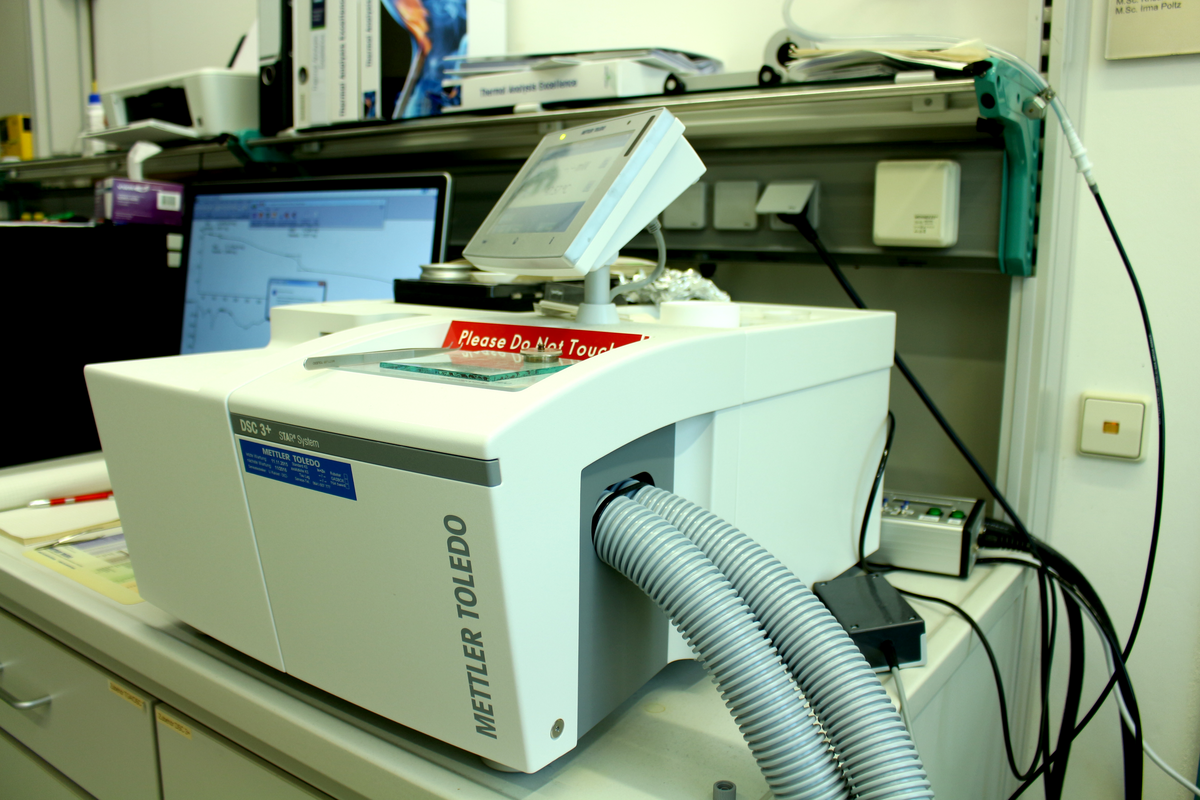
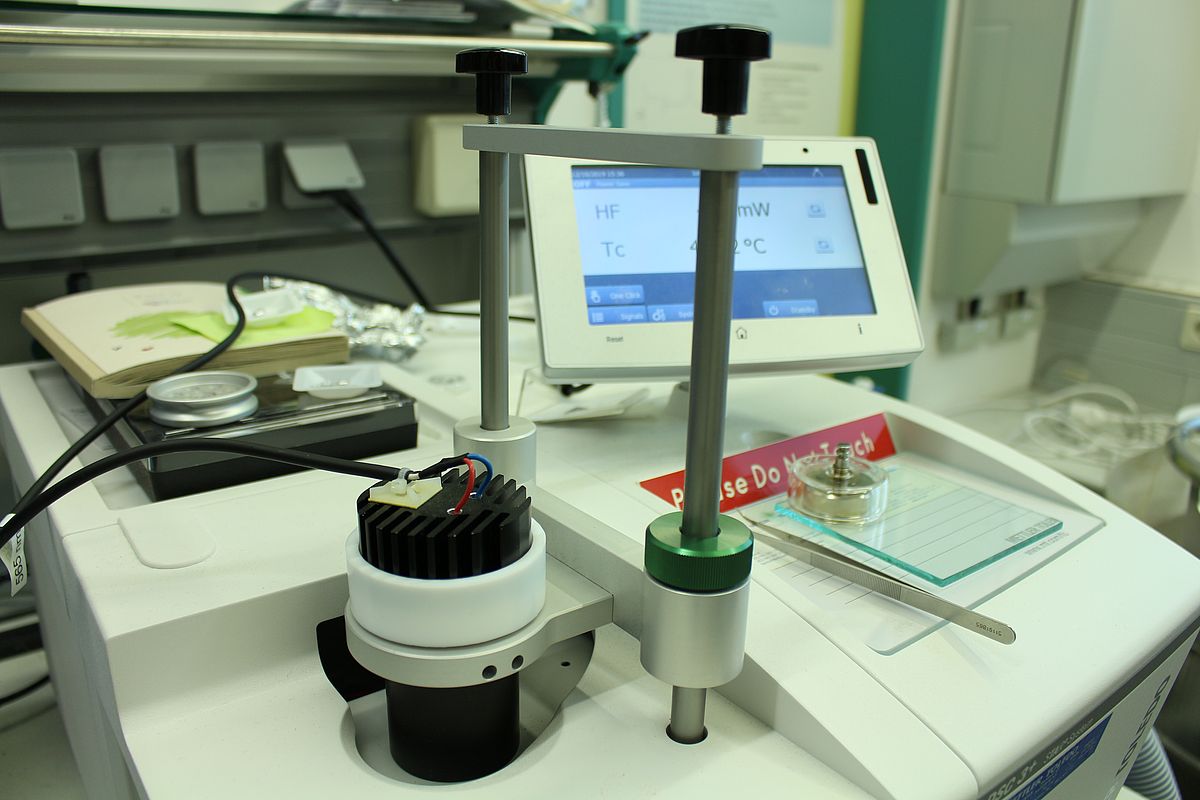
In the dynamic scanning calorimentry instrument, it is possible to observe phase transitions. For example, you can observe glass transition temperatures or melt and crystallisation processes. In addition to standard measurements, we can also illuminate the samples with specific wavelengths while running the experiment.
Technical data:
| Temperature range | -150 °C to 700 °C |
| LEDs for illumination | 350 nm, 365 nm, 385 nm, 450 nm, 565 nm |
Modulated DSC possible (TOPEM): Differentiation between reversing and non-reversing heatflows.
Contact person: Jasmin Richter
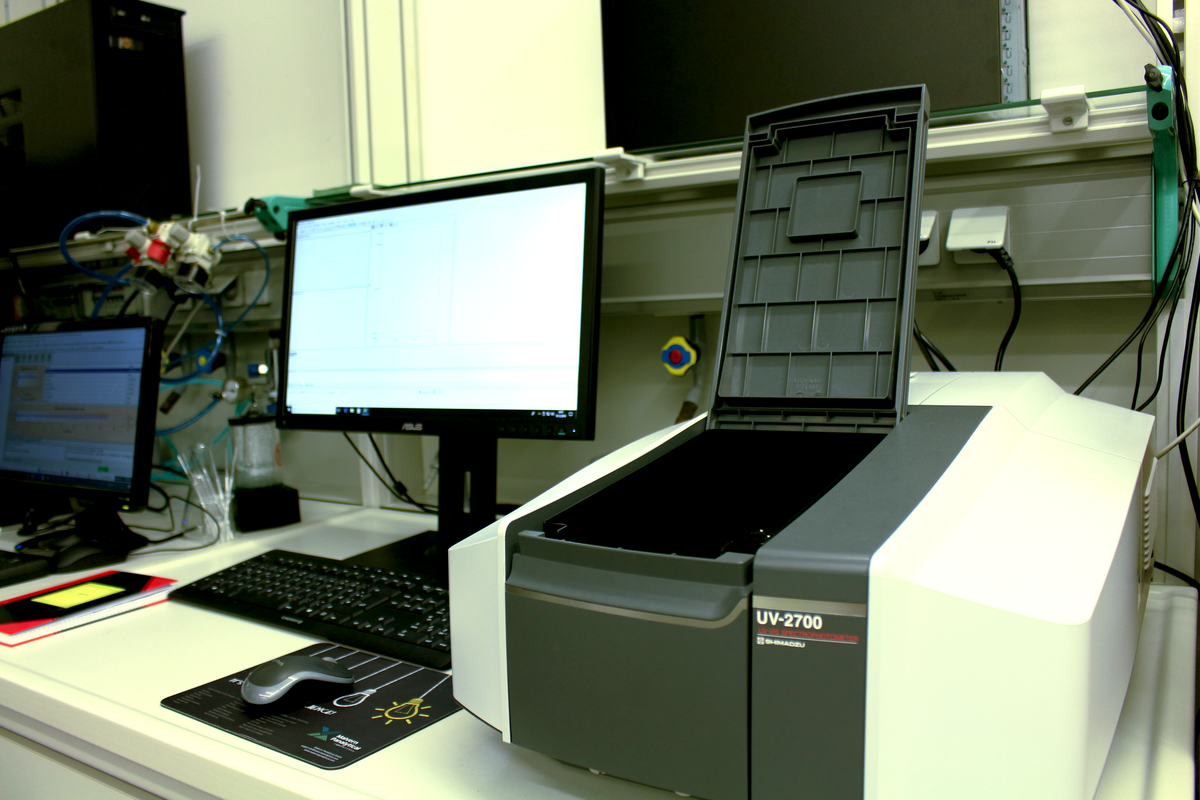
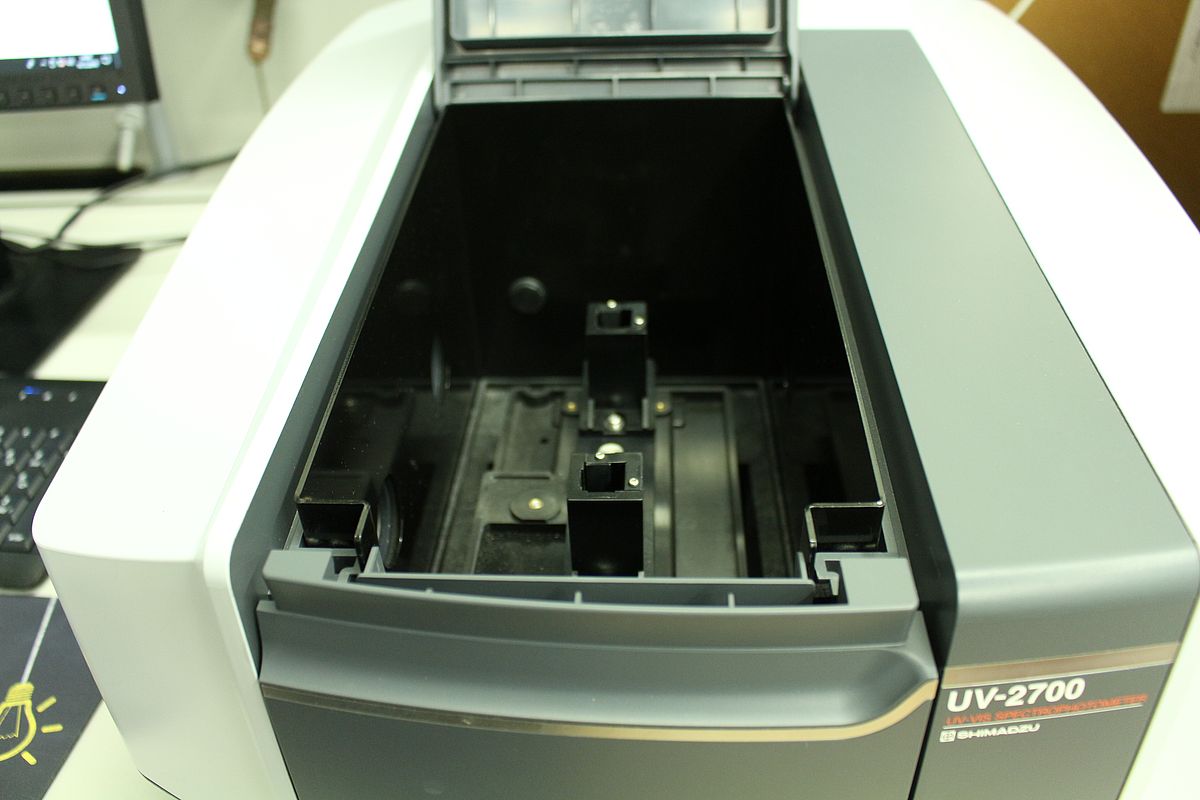
Technical data:
| Wavelength range | 185 – 900 nm |
| Scanning speed | 4000 and 0.5 nm/min |
There is also a diffuse reflexion unit to measure spectra in reflexion mode. For this unit, the temperature can be varied between room temperature and 600 °C.
Contact person:Souvik Gosh (in solution) or Ruchira Arpin Colaco (solid state)
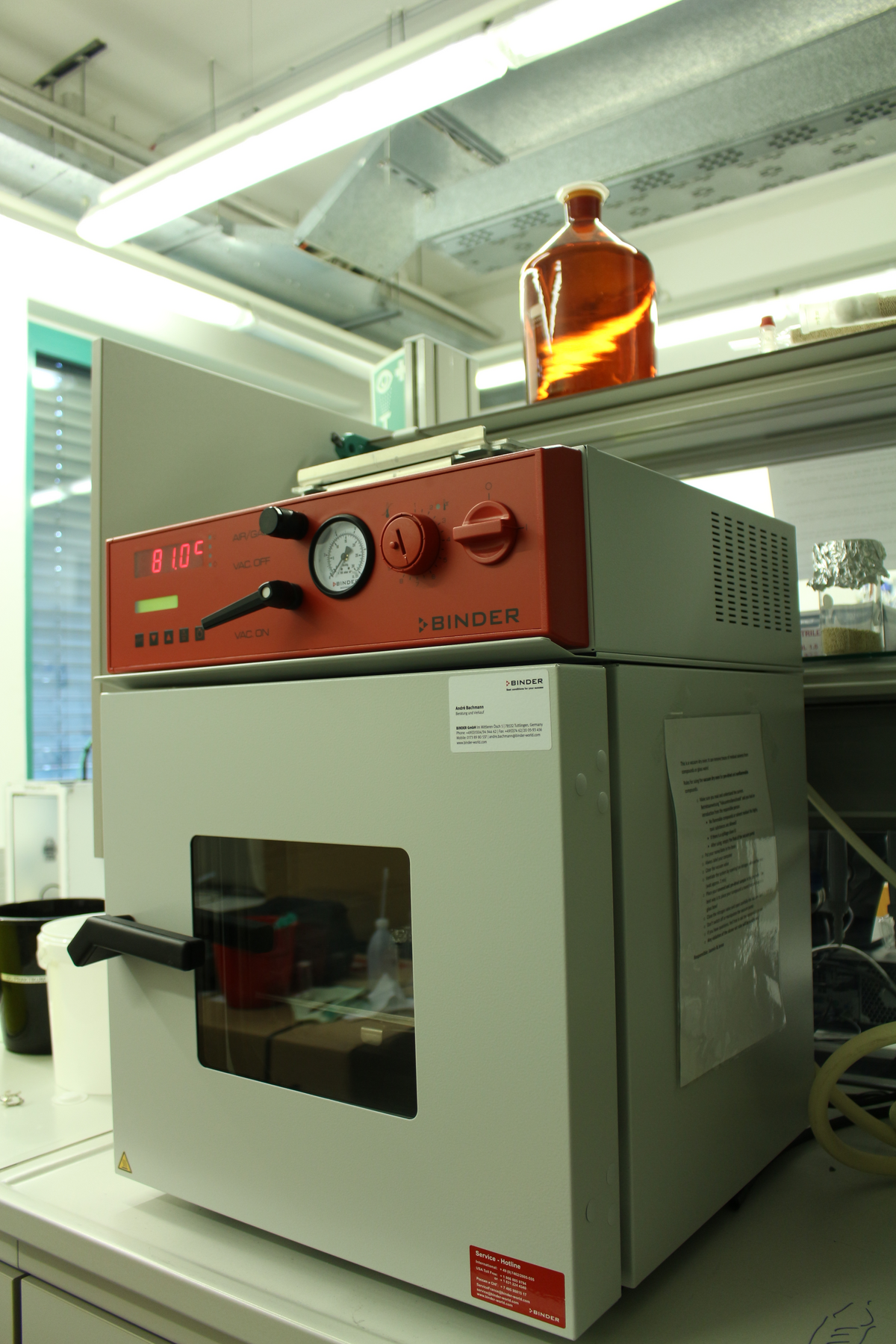
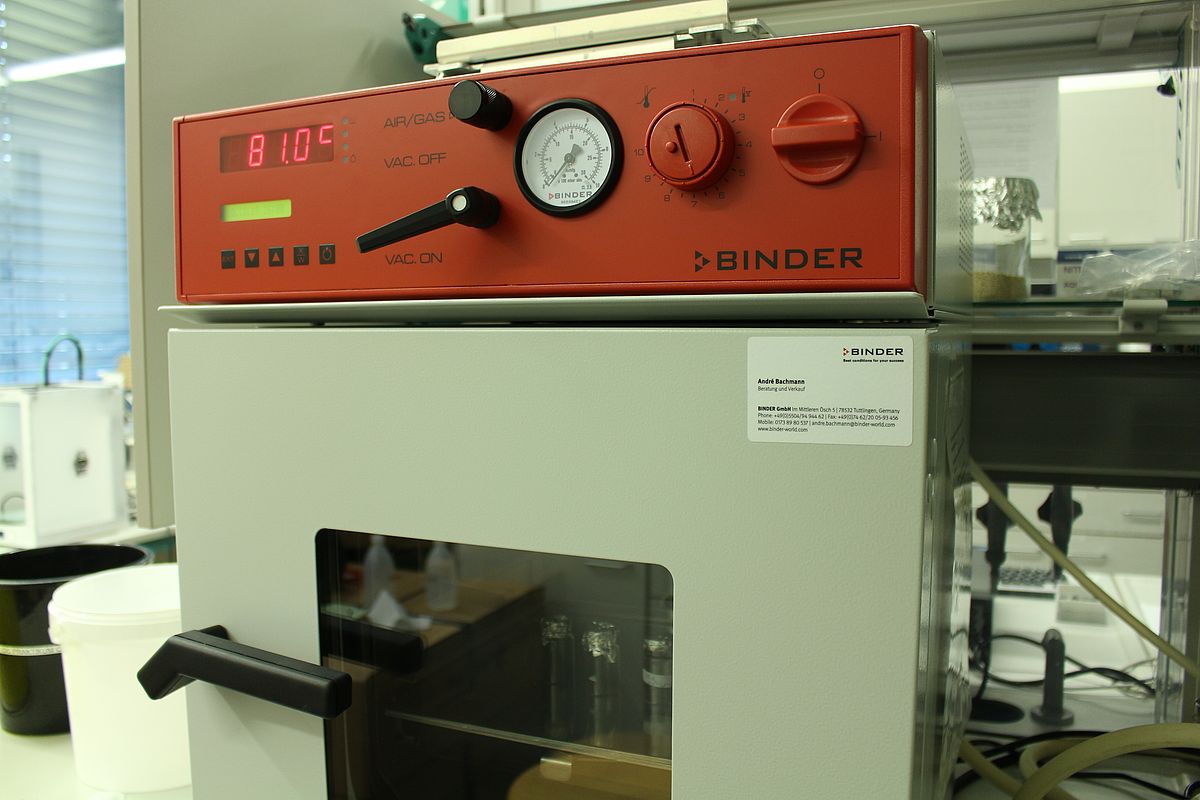
Contact person: Jonas Hoffmann
For further information and questions about avaliable devices, please contact Jasmin Richter.
